
The Magazine of Wilbraham & Monson Academy. At Home. In the World.
The Magazine of Wilbraham & Monson Academy. At Home. In the World.


The Magazine of Wilbraham & Monson Academy. At Home. In the World.
The Magazine of Wilbraham & Monson Academy. At Home. In the World.
by brian p. easler Head of School

AAs a globally diverse learning community, we engage with topics as broad and deep as the world is complicated. Having welcomed young learners from more than 60 countries (since 2017) and across the United States, we are uniquely positioned to inspire our students to reach their maximum learning potential. We accomplish this not only through a diverse school community, but also through a school culture marked by expressive freedom, intellectual diversity and disciplined non-partisanship. We expose students to global, national and local triumphs, tribulations and injustices—both past and present— in approaching our studies from as many perspectives as possible.
We encourage thinking critically and with an open mind about causes, consequences and moral implications. We push ourselves and our students to learn as much as possible about all of the various aspects of any given topic, whether subscribed to or not, and to engage with one another respectfully and with the expectation of civil discourse.
Civil discourse is conversation characterized by respect and civility. It aims to foster enhanced understanding, mutual trust and continuous learning. Wilbraham & Monson Academy embraces its diversity of perspectives and expects its community to follow the principles of civil discourse at all times.
As members of the WMA community, we:
• Respect everyone’s right to hold individual ideas
• Approach social, ethical and political conversations with empathy and a willingness to listen to ideas that differ from our own
• Ground discussions in fact and reason
As members of the WMA community, we avoid:
• Direct antagonism (insults, demeaning or discriminatory language, mockery)
• Hostility (ad hominem attacks, hate speech, uncontrolled emotion, threats)
• Excessive persuasion (misrepresentation of facts, emotional manipulation, logical fallacies)
The WMA Community Values should be central to any interaction in our community. This is particularly imperative as we grapple with potentially divisive topics, such as those with contemporary social, ethical and political implications. Several of the Values are particularly pertinent to the practice of civil discourse:
• Honesty & Accountability: We should hold ourselves accountable by presenting our views with honesty and avoid manipulating or misrepresenting factual information for the advancement of an agenda.
• Kindness & Patience: We should value our differences and support one another. Because political or social disagreements often lead to feelings of animosity, it is critical that we keep kindness and patience at the forefront of all interactions.
• Respect: We should respect our school, ourselves and others. When engaged in conversations that contain differing viewpoints, all parties should maintain and show respect for others.
Advocates for all students, not activists for causes We believe it is our role to challenge our students to think deeply about complex topics and to approach their studies from a variety of perspectives. At the same time, we encourage all members of our community to remain mindful of the impact of injecting personal opinions regarding any given topic. Specifically, teachers are expected to practice moderation when expressing personal ethical or political opinions, especially on potentially contentious topics, and will exercise an avuncular restraint when doing so. The idea is for teachers to embody tolerance and to facilitate a learning environment that promotes
intellectual pluralism—the opportunity for civil consideration of differing ideas. We want our students to feel supported and encouraged to ask honest questions about important issues, and empowered to present views that may conflict with those of their teachers or classmates, without fear of ostracization or reprisal.
We approach this task through the practice of disciplined non-partisanship, which aims to counteract any unintentional bias by intentionally exposing students to as many perspectives as possible on any given topic. The objective is to provide students the most well-rounded, engaging and formative learning experience possible. Disciplined non-partisanship requires constant principled attention, but it also fosters a highly desirable learning environment. Since we will not always agree, it provides ample opportunity for the central educational practice of civil discourse.
Deliberating respectfully with others through civil discourse, especially with those who have different perspectives, is central to the learning process and is the basis for a life of healthy civic engagement. Sometimes our conversations and interactions reinforce previously held beliefs, and sometimes they bring deeper understanding of other ways of thinking. Both results contribute to the transformational educational experience that is the mission of Wilbraham & Monson Academy.
Respectfully,
e ditor
Teddy Ryan
Associ Ate e ditors
Russ Held
Bill Wells
A rt director
Chris Tinnesz
Advisory Bo A rd
Mark Aimone
Brian P. Easler
Heather Hamel ’08
Don Kelly
Janet Moran
Sean Valentine
co N tri BU ti NG W riters
Ryan Cooley ’26
Charlie D’Avanzo
Brian P. Easler
Jamie Gouin
Heather Hamel ’08
Russ Held
Katie Hutcheson ’26
Dr. Anthony Kandel
Don Kelly
Marvina Lowry-Brook
Janet Moran
Sophia Najeebi ’25
Sean Valentine
Vaishnavi “Vivi” Venkat ’25
Bill Wells
d esi GN
Stoltze Design
p ri N ti NG
Puritan Capital
p H oto G r A p H y
Paul Bloomfield
Copperhound Photography
Getty Images
Jamie Gouin
Heather Hamel ’08
Russ Held
Katie Hutcheson ’26
Marvina Lowry-Brook
Sophia Najeebi ’25
Dave Roback
Vaishnavi “Vivi” Venkat ’25
Bill Wells
Various contributing photographers
Bo A rd of t r U stees
Scott B. Jacobs ’75, Chair
David A. Reeves, Vice Chair
Mark R. Shenkman ’61M, Vice Chair
Caitlin S. Flynn ’06, Treasurer
Bonnie Faulkner Ryan ’82, Secretary
Raymond J. Anton ’61M
Christopher C. Antonacci ’06
John J. Baker
Melissa M. Besse
Linda B. Griffin
William R. Guerin ’89
John LaCrosse
Robert F. Little
Barry M. Maloney ’85
Andrew P. Mele
Stephanie T. Robbins ’10
Craig A. Rubin ’63W
Paul J. Sullivan ’91
t r U stees e meriti
Eric W. Anderson
Michael J. Flynn
Richard S. Fuld ’64W
Donald J. Stuart ’73
Benjamin F. Wilson ’69W
Life t r U stee
William E. James ’64W
Alumni, we’d like to hear from you! Send your current contact information and news to alumni@wma.us.
“Academy World” is published in the spring and fall for alumni, parents and friends of the Academy. Please direct comments and letters to:
Wi
Wi
r AHA m, m A 01095-1715
m A rketi
oU
Wilbraham & Monson Academy is a transformational experience where students become challenge-seeking citizens and leaders of an evolving world.
Wilbraham & Monson Academy does not discriminate on the basis of race, religion, color, national origin, age, sex, disability, sexual orientation, genetic information, military status, gender identity, and any other categories protected by federal, state or local law.
Get Social with u S !
@wilbrahammonsonacademy
@WMAalumni
@wilbrahammonson
Wilbraham & Monson Academy
@wilbraham_monson
@wmaalumni


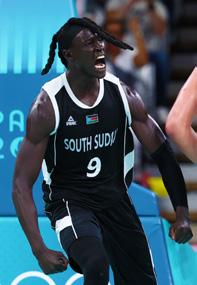
Charlie D’Avanzo retires
m N i i N A ctio N
Science Matters
40 Sara M. Young ’07
42 John Bilezikjian ’88
44 Philip L. Esempio ’84
46 Mark Overdevest ’12
48 Brian W. Juengst ’01
s U pporti NG W m A
2 Dr. Harrison B. Hawley ’61W W m A spot L i GH t
22 Celebrations
30 Campus signage
73 New Trustee: John LaCrosse
W m A ALU m N i
50 Reflection: Heather Hamel ’08
52 Senior Stones: Lawrence Savoy ’74
54 Alumni Games
74 Titans on the World Stage
78 Class Notes st U de N t tr Ave L
58 Costa Rica
60 England 62 Nepal f A c ULty
64 Iceland: Jamie Gouin
66 Greece: The Kandels
67 Spain: Marvina Lowry-Brook
70 Outside the Classroom depA rtme N ts 4 News from the Hill
Fine & Performing Arts
Titans Victorious
Athletics Highlights
We Remember
Alumna in Science
Art Director Chris Tinnesz best describes his cover portrait of Charlie D’Avanzo as:
“An exploding confetti cannon of color, personality, passion and life. Plus, I wanted to capture Charlie’s warm, wonderful smile. He has an electric smile contagious to everyone around him. This was a fun portrait to create.”


Whatever I can do to help WMA, I’ll do it. I learned so much from my time there, and it led me to success in my personal and professional life. Through my annual and planned giving, I hope to give future students the same opportunity.” dr. brad hawley ’61 w
‘Whatever I can do to help WMA, I’ll do it’
by sean Valen T ine Director of Stewardship & Planned Giving
I“I am an infectious disease specialist and just finished writing a chapter on COVID-19 for a 3 volume encyclopedic textbook. If I can be of any help, I would be happy to do so.”
This is how Dr. Harrison “Brad” Hawley ’61W began his message to alumni@wma.us on March 20, 2020.
Over the next many months, Dr. Hawley, who spent 20 years as Chief of Infectious Diseases and Professor of Medicine at Wright State University School of Medicine, provided guidance on the Wilbraham & Monson Academy’s pandemic response and kept us abreast of the latest findings on testing, masks and other preventative measures. He also hosted a webinar for all alumni and parents in which he shared his expertise and took questions. Sometimes WMA alumni have experience that we never thought we’d need.
As a contributor to the Atlas Fund for nearly 15 years and a member of our Heritage Society— for making the Academy part of his estate plans—Dr. Hawley was a strong supporter before his medical knowledge was needed. Since the end of the pandemic, he has continued to lend his support to WMA.
Dr. Hawley came to Wilbraham Academy in 1959, mostly because nearby Minnechaug Regional High School wasn’t built yet and he preferred not to be bused into Springfield.
“I lived on Brookside Drive in Wilbraham and came in as a day student,” Dr. Hawley said. “The school wanted me to repeat 10th grade. I’m not sure how, but my parents and I were able to talk them out of that.”
Initially, Dr. Hawley thought himself in a bit of a no man’s land, suddenly disconnected from peers who didn’t attend the Academy but also from the boarding students who lived on campus. Luckily
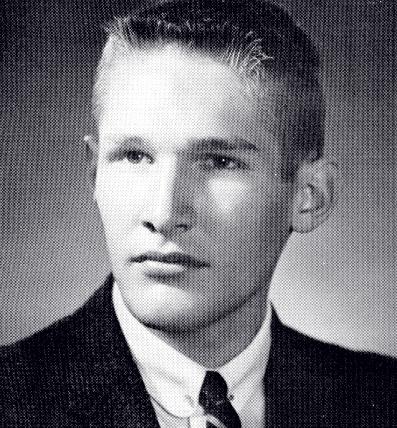
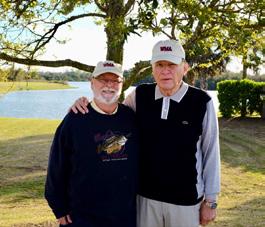
this soon rectified itself, as he got to know local classmates (like Bill Cowdrey, Peter Plumb and Peter Murray) and made friends with the boarders.
“I became friends with Bruce Winston (’62 non-grad), who was the son of Harry Winston the gem dealer,” Dr. Hawley said. “Apparently, Bruce’s father had friends among the officers at Westover (Air Force Base) and would ask if their daughters would come to the dances so Bruce would have a date!”
Dr. Hawley found that the small classes and dedicated faculty made learning easy and provided him with the tools and confidence for success in the classroom. Fond memories include classrooms so cold in winter that gloves were needed, Shakespeare readings outside on the lawn under the trees in the spring, and the wonderful food prepared by Billy and Bertha Lak in the dining hall.
“I never had a class with Fred Watts, but I recall he was affable and a little goofy,” Dr. Hawley said. “Actually, I remember Mr. Watts more by his nickname: Sparky. Can’t recall how he got it though. Mr. (Gray) Mattern was approachable enough but highly dignified and stern.”
Dr. Hawley was on the committee for Del Todo (yearbook) and the Math Club. Athletically, he was an all-star soccer player, and he played intramural basketball and varsity golf. When it came time to choose a Senior Quote, Brad went


with Longfellow: “As turning the logs will make a dull fire burn, so change of studies a dull brain.”
Dr. Hawley certainly lived that concept after graduation, as he first attended Dartmouth College and majored in art. He then went on to the Medical College of Virginia, completing his postgraduate medical training in 1973. By 1975, he was board certified in internal medicine, and the same for infectious diseases in 1978. He was recruited by Wright State University to start their infectious disease program—now one of the largest in the country—and spent his career there amassing a curriculum vitae stretching to 22 pages. His publications include titles: “Multicenter collaborative evaluation of a standardized serum bactericidal test as a predictor of therapeutic efficacy in acute and chronic osteomyelitis,” “Long COVID: Clinical findings, pathology, and endothelial mechanisms” and “Why was Leonhard Euler blind?” His most recent paper, exploring the prevalence of typhoid fever in the family of Orville and Wilbur Wright, was published in Harvard Magazine.
It hasn’t only been the study of pathogens attracting Dr. Hawley’s attention since leaving the Academy. Along the way, he has turned his
“intellectual logs” on some interesting hobbies.
“I was a race physician at the Mid-Ohio race track in Mansfield, Ohio, for three years,” he said. “My wife, Christine, and I are charter members of the Ohio Ornithological Society. We also bred and showed Sealyham Terriers. We had 14 American champions and six Canadian champions, including one best-in-show and best-of-breed in the Canadian Kennel Club Centennial Show.”
Dr. Hawley also stayed connected with his classmates and the Academy. He and Cowdrey have vacationed together numerous times.
Dr. Hawley attended his 50th Reunion in 2011, and his 60th in 2021 (virtually then). An avid basketball fan, Dr. Hawley has followed the careers of many former Titans through March Madness and into the pro leagues.
When asked to reflect on his time at the Academy and why he has supported WMA so much for so long, Dr. Hawley’s answer is simple.
“Whatever I can do to help WMA, I’ll do it. I learned so much from my time there, and it led me to success in my personal and professional life. Through my annual and planned giving, I hope to give future students the same opportunity.”
WMA thanks Dr. Hawley for all he has done— and will continue to do—for the Academy. That said, we trust he won’t begrudge our hope to never need his professional expertise again.

The Heritage Society includes those alumni, parents, faculty and staff who have provided for the future of Wilbraham & Monson Academy by making financial support of the Academy part of their estate plans. Recognition is open to anyone who has made provisions for the Academy in their will or estate plan regardless of size. Those who have informed us of their plans will be added to the society and honored accordingly. Recognition is accorded posthumously to those who do not make us aware of their plans prior to their passing.
Lily Meier ’26, Padraig Dunbar ’26 have the ‘write’ stuff
Wilbraham & Monson Academy’s Lily Meier ’26 and Padraig Dunbar ’26 aren’t future authors—they are current authors.
It became official for Lily and Padraig, students in WMA’s Novel Writing class, when they received copies of their novellas in May.
A fictional piece set in New York City during modern times, Lily’s 15,837-word “Snow” follows a teenaged protagonist, Jessica, who’s thrust into protecting her family following the murder of her father. After her brother becomes involved in illegal activity, Jessica finds herself having to make difficult life choices with her friends and family as her world turns upside down.
“It’s always been a dream of mine to publish a book and finally getting to complete it feels incredible,” Lily said. “Looking at what I’ve accomplished over many months gives me a rush of pride. I am so glad to have had this opportunity.”
Meanwhile, Padraig’s 16,609-word “A World Without Sun” takes place in dystopian Chicago. The story’s young protagonist, Scott, teams with his best friends to release the sun from the grips of the Grand Chicago Empire and its leader, Everett Reinhard.
“I am extremely excited and grateful to have a physically and printed out novel that I wrote,” Padraig added. “It makes me feel so accomplished and proud of my work, and like I can take on anything I want. It is inspiring to see my work pay off.”



Pair among best in American Mathematics Competitions
Wilbraham & Monson Academy’s Phuong “Stefanie” Nguyen ’25 and Zijie “Jason” Zhou ’26 scored among the best students in North America on this year’s American Mathematics Competitions.
Students had 75 minutes to answer 25 questions. Nearly 160,000 high school students from the United States and Canada participated in the 2024 exam.
Stefanie (AMC 12) and Jason (AMC 10) placed in the top five percent on their respective test, earning them Certificates of Excellence.
Seven years of one subject?
Yes, that can be considered a passion, and Wilbraham & Monson Academy’s Callie Dunbar ’24 certainly has a passion for all things French.
Callie was awarded the Academy’s Outstanding Senior in French Award by The American Association of Teachers of French. The honor goes to a student who, according to the organization, “demonstrated excellence in the study of French as well as exceptional commitment to the French language and many cultures where it is spoken.”
Callie, president of WMA’s French Club as well as a member of the Société Honoraire de Francaise, received a certificate and medal.
Callie took seven years of French classes at the Academy, and also traveled to France her junior year.
“I think the language program has allowed me to grow and develop my language skills, especially having the opportunity to travel with two of my teachers my junior year to France.
“(Taking French) was the best experience. I met so many great teachers who helped me. I definitely am confident to use my language skills in the real world and use them in college, and also in my future professional endeavors.
“I liked how I learned the language within the classroom, but also having the knowledge about the culture. Being able to visit the landmarks last year solidified my interest in the language.”
Callie’s teacher, Madame Fabienne Dubois, said: “Callie is receiving the 2024 Outstanding Senior Award for her dedication and commitment to the French program at WMA. This award is only given to one senior per school annually.
“I am very grateful that I got to teach Callie for several years (starting before middle school) until this year for her post-AP French class. Callie was our French Club president and an inducted member of our French Honor Society. She is a ‘fantastique’ student and I will miss her greatly next year.”

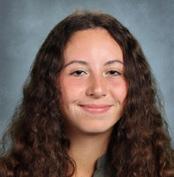
Wilbraham & Monson Academy’s Lily Meier ’26 loves to communicate.
Actually, ella le encanta comunicarse.
Lily, who has taken Spanish lessons and classes for nine years, earned a Gold Medal on the 2024 National Spanish Exam. A student in La Profe Maridol Linares’ Honors Spanish III class, Lily took the Level 3 exam.
“I’m very proud about how I did on the exam,” Lily said. “I prepped for it a lot beforehand and was excited to see how my work paid off. It is a great honor to receive this prestigious award.”
Ms. Linares noted that Lily “is an exceptional student who impresses me with her dedication and performance. What sets her apart is her understanding that learning Spanish isn’t merely about mastering a subject, but embracing it as a tool for communication and connection. She doesn’t just memorize vocabulary and grammar; she immerses herself in the language, understanding cultural context.”
In total, 35 students earned awards on this year’s National Spanish Exam, including five silver medals.
“While there’s always room for improvement, particularly in areas like listening comprehension and nuanced cultural understanding, I believe that the students’ performance this year reflects their dedication and hard work throughout the academic year,” Ms. Linares said. “Overall, I’m proud of how the students tackled the national language exam and I’m confident that they will continue to excel in their language studies in the future.”
national S pani S h exam award winner S
Honorable Mention: Min-Chan Koo ’26, Natalie Blais ’27, Rosie Rodriguez ’27, Vladyslav Nikulin ’25, Brody O’Hara ’27, Woohyuk Seong ’26, Sebastian Medina ’27
Bronze Medal: Charlotte Young ’27
Silver Medal: Kanyinsola “Ajayi” Kanyin ’25
Honorable Mention: Taisiya Timokhina ’25, Ainsley Trueman ’26, Sylvia Tobias ’27, Christian Sanchez ’27, Mya Bates ’26, Lindsey Wiatrowski ’27, Brendan Ricca ’27, Callie Klepacki ’27, Iyanna Hodge ’27, Ryan Clark ’25
Bronze Medal: Patrick Dorunda ’26
Silver Medals: Nathan Presz ’27, Pattaranunt “Elle” Poonsornsiri ’25, Pietro Leone Avanza ’25
3
Honorable Mention: Jan-Paul Ramesh ’26, David Wibiralske ’24, Wyatt Cavanaugh ’27, Malena Donovan ’25, Eoin Cavanaugh ’27, Romy Allen-Schubert ’27, Dylan Shonak ’27
Gold Medal: Lily Meier ’26
Level 4
Honorable Mention: Dakotah Thomas ’26
Bronze Medal: Gabriel Hall ’26
Silver Medal: Roman Barrett ’25
Level 5
Honorable Mention: Ji Min Hong ’25

Emma Landry ’25 strikes gold on National French Exam
Wilbraham & Monson Academy’s Emma Landry ’25 felt like her language skills were improving this school year in French. Her performance on the national language exam confirmed her belief.
Emma, who has been taking French at the Academy for six years, earned a Gold Medal on the 2024 Le Grand Concours (National French Contest). She posted the top score in her region (chapter) and placed sixth nationally on the Level 5 exam, the highest test offered. It was the first time a student at WMA won the chapter at the Level 5 competition.
Très bien, Emma!
“I (took) AP French with Madame (Fabienne) Dubois (my junior year),” Emma explained. “I performed better on the exam than I had in prior years, which I mostly attribute to my experiences in AP French and Madame Dubois’s teaching. In AP French, our class (was) exposed to a wide range of songs, movies, news segments, and scientific articles that not only help us better understand the language, but also engage with French culture. I think the contest reflected our progress well.”
Overall, nearly two dozen WMA students received recognition for their efforts on Le Grand Concours.
“It was a great year, with 17 medals and a total of 20 prizes,” Madame Dubois stated. “Eight students ranked nationally number 10 or (better). One student (Cooper Dwyer ’25) ranked second at the chapter and the national levels. Students in French classes did a fantastic job and it is very encouraging.”
french award winner S
Level 1
Honorable Mention:
Yuxiao “David” Zhou ’26
Bronze Medals:
Chloe Roumeliotis ’26, Jayden Adeboye ’25, Renée Schmalb Amorim ’25
Silver Medal:
Ximena Perez Garcia ’26 (No. 2 chapter, No. 10 nationally)
Level 2
Honorable Mention: Kendall Schechterle ’27
Silver Medals: Yuan “Linda” Xiao ’25 (No. 10 chapter, No. 13 nationally), Lucia Segura Espinosa ’26 (No. 8 chapter, No. 11 nationally)
Gold Medal: Vicky Luo ’28 (No. 4 chapter, No. 6 nationally)
Level 3
Bronze Medals: Vaishnavi “Vivi” Venkat ’25, Mark Tobias ’25
Gold Medal: Cooper Dwyer ’25 (No. 2 chapter, No. 2 nationally)
Level 4
Bronze Medal: Rebecca Kakule ’25
Silver Medals: Katie Hutcheson ’26 (No. 2 chapter, No. 10 nationally), Noah Stich ’25 (No. 2 chapter, No. 10 nationally), Kiki Brook ’26 (No. 3 chapter, No. 12 nationally)
Level 5
Silver Medals: Breslin Grozio ’25 (No. 2 chapter, No. 8 nationally), Alicia Gil Martinez ’24 (No. 3 chapter, No. 9 nationally)
Gold Medal: Emma Landry ’25 (No. 1 chapter, No. 6 nationally)

Ryan Cooley ’26 leads successful cast of Latin Award winners
Wilbraham & Monson Academy’s Ryan Cooley ’26 has proven to be an exceptionally bright student. Not only did he recently win an elite academic award, but he’s figured out a way to hang out with faculty member Don Kelly a few days a week.
Brilliant!
Ryan won a Gold Medal and Summa Cum Laude Certificate for his performance on The National Latin Exam. Ryan, a student in Mr. (Don) Kelly’s Latin IV class, took the Intermediate Reading Comprehension test.
“This year I took the Intermediate Latin Reading Comprehension level of the National Latin Exam, which consisted of two original Latin passages, along with comprehension and grammar questions about them,” Ryan explained. “Mr. Kelly made sure that we were more than prepared for the exam. He is truly an amazing, fun and knowledgeable teacher who makes me look forward to every Latin class.”
li S t of award recipient S
Introduction to Latin
Magna Cum Laude Certificate: Adela Cecunjanin ’24 Joseph Prickett ’27
Cum Laude Certificate: Gabriel Cruz ’25 Nathaniel Jasmin ’27
Gold Medal and Summa Cum Laude Certificate: Jayden Lee-Choi ’26
Beginner Latin
Magna Cum Laude Certificate: Julia Choi ’26 Philip Tikhonov ’24
Cum Laude Certificate: Jason Foerster ’25
Silver Medal and Maxima Cum Laude Certificate: Ha Anh Nguyen ’25
Intermediate Reading Comprehension
Magna Cum Laude Certificate: Avery Kay ’26
Gold Medal and Summa Cum Laude Certificate: Ryan Cooley ’26
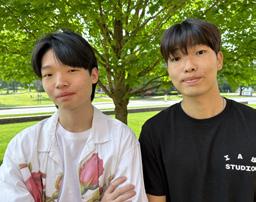
Seungmin “Eric” Lee ’24 and Yougun Yang ’25 have created some impressive pieces of art during their time at Wilbraham & Monson Academy, so much so that even the state has taken notice.
Seungmin and Yougun earned Silver Key honors at this year’s Massachusetts Scholastic Art Awards, a competition held statewide for students in Grades 7 –12.
Yougun won a pair of silvers, one in the Drawing and Illustration category and another in Industrial Design.
“Yougun has been steadily developing his skills,” Fine & Performing Arts chair Paul Bloomfield stated. “Now in AP 3D Design, it is evident that he is a talented individual. In class, he is incredibly focused and willing to push boundaries. His work shows good research, careful planning, exceptional execution and an open mind about possibilities.”
Seungmin, meanwhile, earned an award for the second straight year, taking a silver in the Fashion section.
“For the past three years Eric has demonstrated his deep passion and curiosity in all aspects of art and design, taking fashion, photography, ceramics, AP 2D Design, and currently AP 3D Design,” Mr. Bloomfield said. “By doing so, he finds new angles and creative solutions. In addition, in the past two years he has made the most of his time in our afternoon program: Design Studio. By spending most of his time and vacations working on personal and class projects, Eric has developed his skills and interest to an exceptional level, and created an amazing portfolio.”






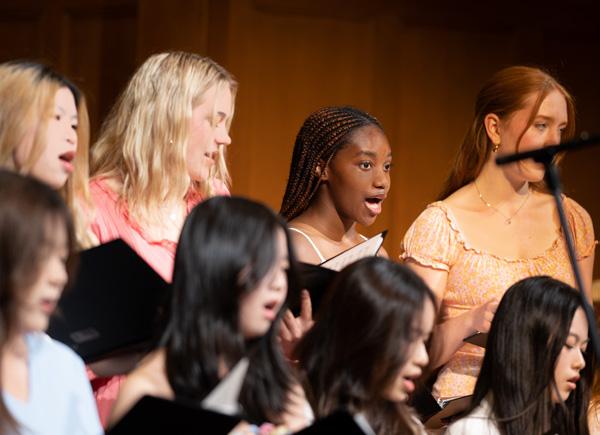
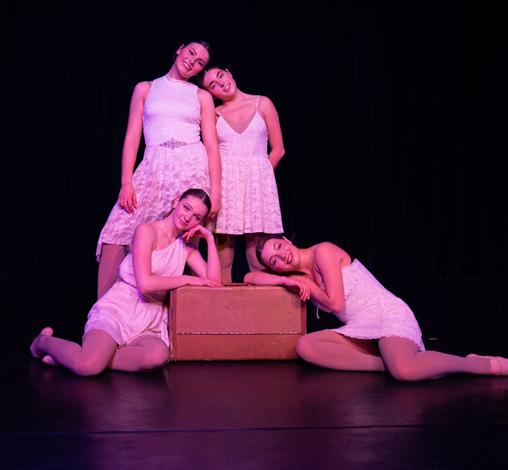
Our talented Fine & Performing Arts students entertained those on campus with a handful of performances during the spring trimester.
Academy Players performed “Seussical the Musical” and Academy Dancers were brilliant in “Speak True. Shine Bright.” in February. Music Studio, Jazz Band, Chamber Ensemble and Chorus combined to entertain with a Spring Concert in April, and The Academy Dancers dazzled with “At Home. In the World.” to close out the trimester in May.




Academy Dancers during their performance of “Speak True. Shine Bright.”
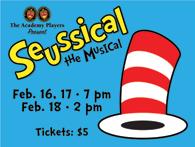
A handful of our top student musicians were captured on a gorgeous fall day by school photographer Paul Bloomfield.
1 from Left: Pauling Lim ’27, Avah MacDonald ’27, Noelle MacDonald ’31 and Zheng “Neil” Lian ’30. 2 Maximus Breger ’26 on piano. 3 Jingyi “Angie” Huang ’28 with the pipa, a traditional Chinese four-string plucked lute. 4 Noelle MacDonald ’31 and cello. 5 Accomplished violinist Avah MacDonald ’27. 6 Zheng “Neil” Lian ’30 with violin. 7 Oliver Young ’26, on viola, in his Titans hockey jersey. 8 Cellist Pauling Lim ’27. 9 Yunchang “Daniel” Hur ’25 on clarinet. 10 Oliver Young ’26 on viola.
1



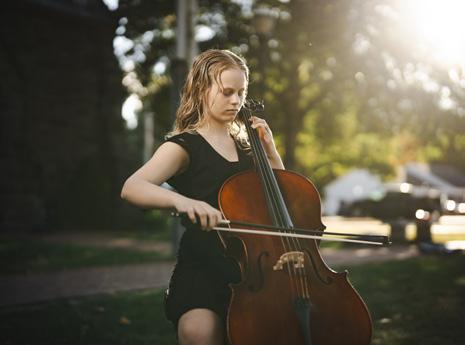
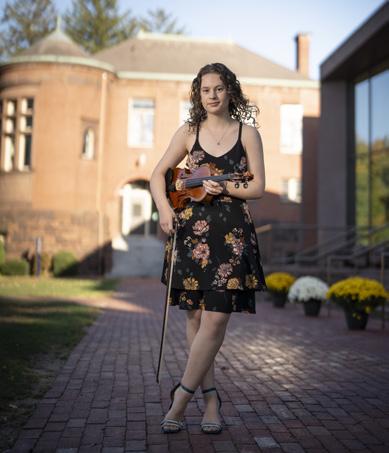


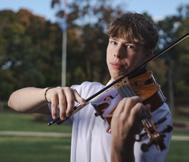


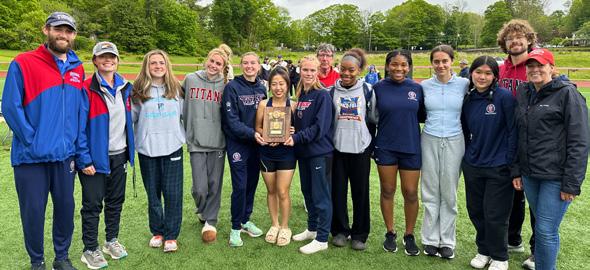
There was no near miss for the Wilbraham & Monson Academy Girls Track team this time.
A year after placing second despite leading for the majority of the meet, the Titans claimed the New England Division III Track & Field title with a dominant performance at Marianapolis Prep School in Thompson, Connecticut, in May. The Titans last won the New England title in 2014.
Coach Danielle Vartabedian’s team won with 65 points, topping the field of 35 teams by 16 points. In short, it was a convincing win for the Titans.
“Winning the championship was so exciting,” Coach Vartabedian said. “To see the final scores and that we

actually did it. It felt like it was a year in the making, because last year we were in the lead the entire meet, and then in the last event, lost by six points. The girls have been on a mission to get redemption and take home that title. But to see that it actually happened, it takes a bit to sink in.”
WMA set the tone early, when Adrianna Chechile ’26, Arielle Chechile ’24, Abby Dorunda ’24 and Jala Witherspoon ’27 won the 4×100 relay with a meet-record time of 50.20 seconds.
“Winning the title felt like the proper conclusion to my senior season,” Arielle Chechile said. “After we missed out on the win last year by a handful of points, winning with points to spare was amazing . . . the culmination of years of hard work and effort. I’m so, so excited for and proud of our team.”
Abby added: “It was a great way to end my senior season at WMA and make a comeback from last year. The girls and I have worked so hard this year. I’m glad to see it all come together in the end.”
On the boys side, the Titans placed seventh on the strength of a victory in the 4×400 relay. Adil Kamara ’24, Evan Reeves ’24, Korbin Dixon ’24, Michael Dorunda ’24 combined for a winning time of 3:32.78.
• from Left: New England Girls Track & Field Champions: Assistant coaches Reese Laviolette and Kate Labosky, Lauren Garvey ’25, Adrianna Chechile ’26, Arielle Chechile ’24, Han Do ’24, Abby Dorunda ’24, assistant coach Greg Walsh (background), Jala Witherspoon ’27, Esiyena Ojior ’29, Charlotte Young ’27, Vicky Luo ’28, assistant coach Josh Ferrell and Head Coach Danielle Vartabedian.
• from Left: Girls 4×100 relay champions: Adrianna Chechile ’26, Arielle Chechile ’24, Abby Dorunda ’24 and Jala Witherspoon ’27.
medal winner S (top 6)
Girls
High jump: t4. Arielle Chechile ’24, 4-8
Triple jump: 2. Arielle Chechile ’24, 34-1
4×100 relay:
1. Arielle Chechile ’24, Adrianna Chechile’ 26, Jala Witherspoon ’27, Abby Dorunda ’24 50.20 (meet record)
100:
2. Abby Dorunda ’24, 12.42 3. Jala Witherspoon ’27, 12.51
400: 2. Arielle Chechile ’24, 1:01.8
4. Adrianna Chechile ’26, 1:02.0
800: 4. Adrianna Chechile ’26, 2:27.8
200:
2. Abby Dorunda ’24, 25.54 3. Jala Witherspoon ’27, 25.70
Boys
Shot put: 4. Korbin Dixon ’24, 42-2.5
1,500:
5. Michael Dorunda ’24, 4:15.3
110 hurdles: 5. Korbin Dixon ’24, 16.92
400:
2. Evan Reeves ’24, 52.48
300 hurdles: 3. Korbin Dixon ’24, 41.6
3,000: 5. Michael Dorunda ’24, 9:33.1 4×400 relay: 1. Adil Kamara ’24, Evan Reeves ’24, Korbin Dixon ’24, Michael Dorunda ’24, 3:32.78
G irl S ba S ketball
Girls Basketball adds accolades
There are seasons and there are seasons. The Wilbraham & Monson Academy Girls Basketball team had a season in 2023–2024, winning the New England Class C title for the first time in school history after falling in the final the previous year. Not long after completing that historic run, the well-deserved accolades starting rolling in for the Titans as six players received recognition from the New England Prep School Athletic Council. Keep in mind that only five players play at a time in basketball, so six Titans landing honors is unheard of.
• NEPSAC Class C Tournament MVP: Caterina Ravosa ’26
• NEPSGBCA Class C Defensive Player of the Year: Selah Prignano ’26
• ALL-NEPSAC Class C First Team: Adela Cecunjanin ’24, Caterina Ravosa ’26, Selah Prignano ’26
• ALL-NEPSAC Class C Honorable Mention: Ella Chandler ’24, Hannah Grudzien ’25, Iyanna Hodge ’27
Coach Durelle Brown said: “We always say here in our program, ‘when the team shines, everyone will shine,’ meaning do not place individual success before team success. If we work all out for the team to succeed, individual accolades will present themselves. That statement, and our team belief, cannot be more true and apparent within this edition of WMA Girls Hoops during our historic season that our girls put together in 2023–2024. It was a monumental season put together by some very special, dedicated, committed and selfless young ladies.”

We always say here in our program, ‘when the team shines, everyone will shine,’ meaning do not place individual success before team success.”
Coa C h d urelle b rown

Quotes from Head Coach Jamie Gouin
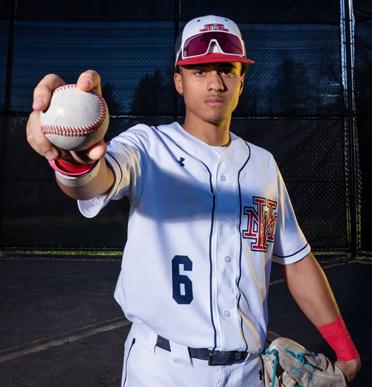
1
“Josiah had a tremendous season at the plate. Josiah batted an impressive .415 to lead WMA in batting. Josiah earned the Baseball Coaches Award for his coachability, positive attitude and leadership. Josiah helped the Titans to a thirdplace finish in the Cleary Division. He will be playing for Union College.” •
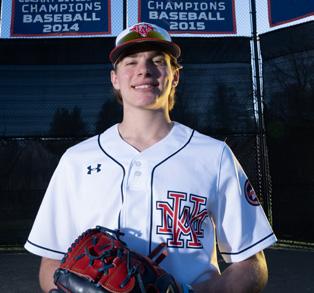
2nd team all-lea G ue
“Ty is the model of what I expect all future Titan baseball players to be. Ty earned the Baseball Coaches Award for his coachability, positive attitude, desire to win and leadership. He will be playing at St. John Fisher.” •
1
“Liam was WMA’s Most Valuable Player. Simply put, he had a tremendous year at the plate, in the field and on the mound. He had a .395 batting average against some of the best high school pitching in New England. Liam will be playing at Colby College.” •


2nd team all-lea G ue
“Trey had a fantastic year on the mound. Trey pitched tremendous games against Cheshire, Salisbury and Millbrook. He will be returning in the fall for his senior year.” •
Quotes from Head Coach Annie Kandel

Katie Hutcheson ’26
nep S ac fir S t team
“Katie is a mixture of hard work, skill, desire and a stubborn refusal to quit. She played almost every minute of every game and did so as a midfielder, which means she runs the entire field for 48 minutes. A tough defender, she excels at double-teaming our opponents’ driving players, creating turnovers and picking up ground balls. Her accurate shot makes her one of our top goal scorers as she notched 48 goals this season. She also has a deep unselfish streak, and as such recorded 21 assists. Finally, she inspires others with her tremendous work ethic.” •
nep S ac honorable mention
“Abby is truly a leader in every sense of the word. As captain, she encourages and supports all of her teammates on a daily basis. She is the first to cheer for a teammate’s success or to offer encouragement when needed. A strong attack player, she scored 27 goals this season and had a knack for finding the back of the net at the most critical times. She has an incredible lacrosse IQ as she is truly a student of this game.” •
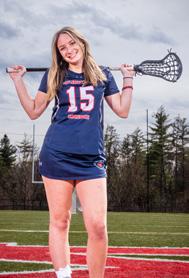

nep S ac fir S t team
“Ally is one of the most dangerous scoring threats in New England. Her speed and shot placement make her a constant problem for opposing defenses. She scored 53 goals this season, despite often being the primary focus of defenders. Ally is also an excellent playmaker, dishing out 26 assists as she is always searching for open teammates. She led the team in draw controls and ground balls, both of which are critical in terms of team ball possession.” •
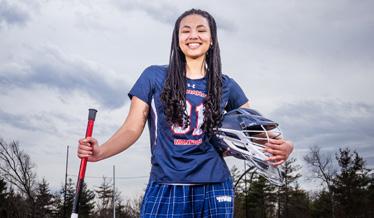
nep S ac honorable mention
“Natalia played the hardest position on the field— goalie—with a fearless attitude and fierce desire to win. Natalia works so hard at practice, and as the only goalie for the team she is in every single play of every drill with no complaint. Natalia had a 50% save percentage over the season with some standout games and key saves in some of our closest, hardest-fought competitions.” •
Unlike previous years, rain didn’t stop this 2024 Suffield Invitational.
And once the Wilbraham & Monson Academy Girls Tennis players took to the court, not much could stop them either.
Romy Allen-Schubert ’27 and Emma Landry ’25 placed first and second, respectively, at the Suffield Invitational in May.
Romy beat a Williston Northampton School foe in a close opening match before shutting out opponents from Frederick Gunn School and Ethel Walker School to win the No. 2 singles title.
“I was really happy with my result on Saturday and thought it was a great way to end the season,” Romy said. “I have played tennis (at WMA) since sixth grade, but this year’s team has been my favorite by far. This team is really special to me, and I am going to miss the seniors so much. It was very meaningful to me to share this experience with them.”
Meanwhile, at No. 1 singles, Emma defeated players from Suffield Academy and Ethel Walker before falling in the final to an opponent from Frederick Gunn.


I think that I played well. It was my strongest performance of the season against some excellent competitors. I feel like it was not only the best athleticism I have demonstrated, but also the greatest mental toughness. In my second match, I saved four match points in a tight tiebreaker to earn a spot in the championships, which was an amazing feeling.”
e mma l andry ’25
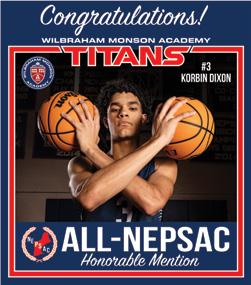
riflery
Korbin Dixon ’24 earns
It didn’t matter which end of the floor he was on—Korbin Dixon ’24 was the go-to player for Wilbraham & Monson Academy’s Prep Basketball team in 2023–24.
For his efforts, Korbin earned a spot on the New England Prep School Athletic Council AA Conference Honorable Mention list for his senior year.
A 6-foot-5 guard, Korbin averaged 15.9 points per game, shot 50% from the field and often guarded the opponent’s top scorer. Korbin was also named the team’s MVP award winner.
With an undefeated season and another state title, on the surface this year looked like so many others for Wilbraham & Monson Academy’s Riflery team.
It wasn’t, as the Titans dealt with one obstacle after another, which is why the final outcome was so satisfying to this year’s team and coaching staff. The final reward was WMA landing six members on the Connecticut State Rifle and Revolver Association All-State Team.
Marisa Cyboron ’24, Vaishnavi Venkat ’25 and Arzum Li ’24 earned spots on the First Team, while Julia Choi ’26, Yejun Lee ’27 and Sungjae Yeo ’24 were named to the Second Team. The all-stars were honored in May at the league’s end-of-the-year banquet.
“This team was special because they overcame a lot of adversity and found a way to win another state championship,” Coach Bill Passy said. “For multiple unexpected reasons, we carried only 10 kids this season when we would normally carry 12, and only had nine available for the championship match. I couldn’t be more proud of this group and what they accomplished.”




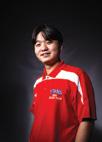


Coach Mike Mannix said: “It is a well-deserved honor as he worked diligently to help us compete in NEPSAC AA. The competition he/we faced in each and every game is something people overlook. He’s guarded players who are committed to play at Michigan State, Texas A&M and Georgetown, just to name a few. NEPSAC AA is a top-five league in the country and Korbin proved he belonged.”
During a school trip to Costa Rica in late May, Korbin committed to attend and play basketball at Emory & Henry College in Emory, Virginia.

track & field
4 Titans compete at Track Nationals
Choosing to do something extremely difficult by choice is a sign of passion.
Four members of the Wilbraham & Monson Academy Track & Field team took their passion to Greensboro, North Carolina, to compete at the Adidas Track & Field Nationals at North Carolina A&T University in June.
Coming off an exceptional season, when she helped the Titans win the New England Division III title, Jala Witherspoon ’27 took 12th place in the 100 meters (12.54 seconds) and 13th in the 200 (26.1) in the Freshmen Girls Division.
Teammate Abby Dorunda ’24 also excelled against some of the best track athletes in the country, taking 38th in the 400 (59.24) and 46th in the 100 (12.58) in the Elite Girls Division.
On the boys side, Korbin Dixon ’24 upped his school record in the shot put with a 51st-place throw of 42 feet, 9.5 inches and also finished 40th in the 400 hurdles (1:00.12) in the Elite Boys Division.
Also in the Elite Boys Division, Adil Kamara ’24 placed 104th in the 400 (53.32).
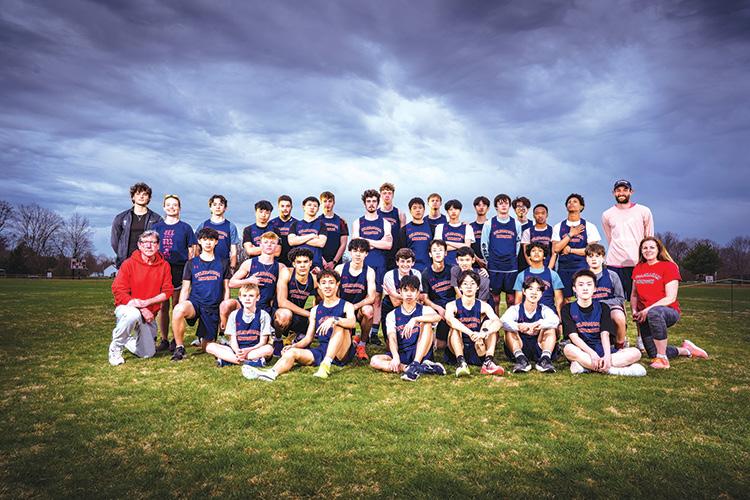
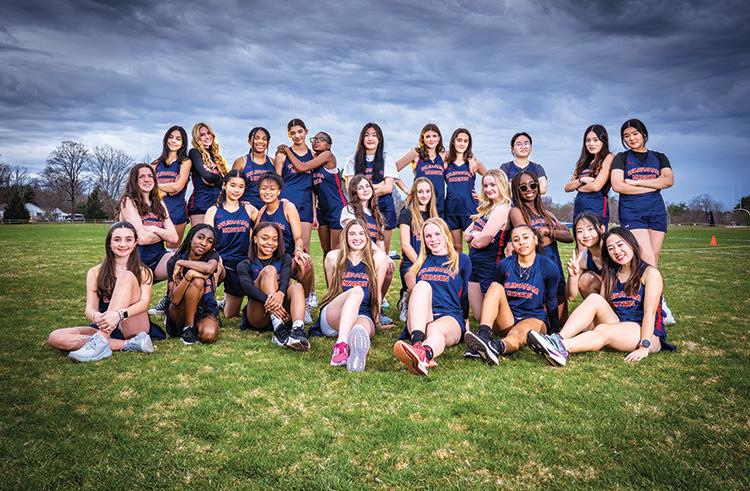
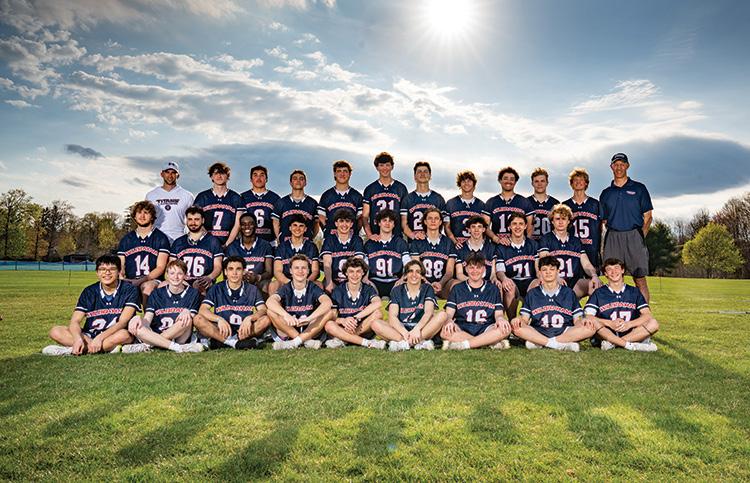


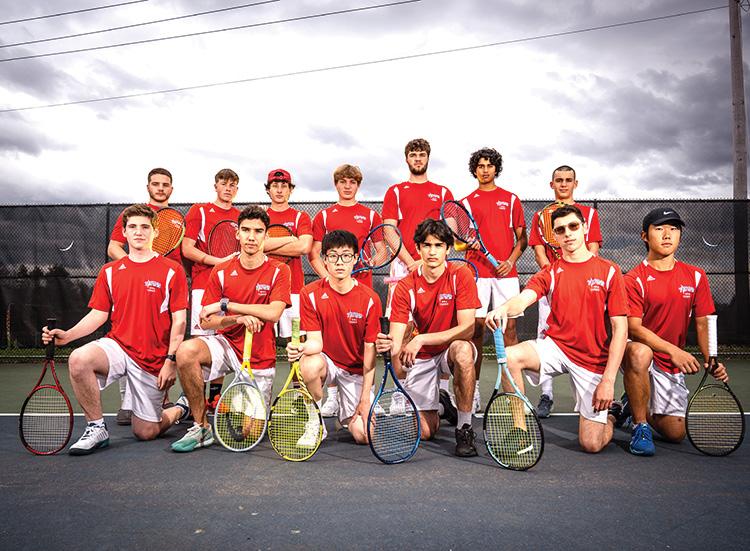



GIRLS RUGBY
GIRLS RUGBY
BOYS RUGBY
BOYS RUGBY


The Class of 2024 celebrated its Commencement Exercises, the 220th of the Academy’s storied history, on Corbin Field outside the Athletic Center on May 25. Here is a look at some of the highlights.
1 Twins Abigail Dorunda ’24, second from left, and Michael Dorunda ’24, second from right, with their father, Mike Dorunda, left, and mother, Jaime Dorunda, right. 2 from Left: Jielei “James” Xue ’24, Zebei “Nick” Cai ’24 and Zhongwang “Baistow” Wang ’24. 3 Student Commencement Speaker Arielle Chechile ’24. 4 Hanser Yoon ’24, left, with Jessica Ethier ’23. 5 Gabrielle Pierce ’24, right, with her mother, Jennifer. 6 Retiring faculty member Charlie D’Avanzo, left, with his wife, Julie, and son, Paul ’04. 7 Head of School Brian P. Easler. 8 Adil Kamara ’24, fourth from left, with family and friends.
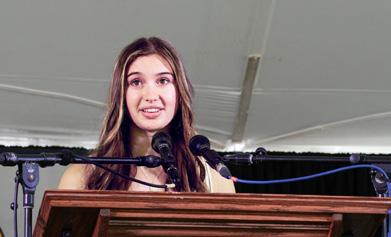

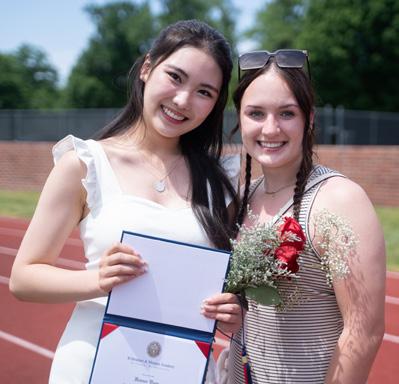




























































The Academy’s storied tradition of Prize Day and Commencement has honored students who have excelled in all parts of campus life. The presentations of awards were made on Prize Day, May 24, and Commencement, May 25.
S pecial prize S
Harriet Jones Nelson Trust
Arielle Chechile ’24
Hanser Yoon ’24
Gift of the Class of 1965
Seungmin “Eric” Lee ’24
Billy Lak Prize
Marisa Cyboron ’24
Stephen D. Luckraft
Memorial Award
Gabrielle Pierce ’24
Berube Prize
Ella Chandler ’24
Pieria Prize
Sally Geoghegan ’24

Kyle E. Webb Award
Daniel Gao ’24
Dr. George E. Rogers Scholar
Athlete Award
Evan Reeves ’24
Markell and Monson Class of 1898 Award/Owen David Dow
Memorial Award
Stephnie Essien ’24
Dr. Joseph P. Cebula
Memorial Award
Jielei “James” Xue ’24
Phil Shaw Award (Female)
Abigail Dorunda ’24
Phil Shaw Award (Male)
Brett Bucktooth ’24
Trustees Cup
Girls Cross Country
Class of 1977 Award
Ryan Cooley ’26
Davison Prize
John Crocker ’25
John L. Nepomuceno Prize
Emma Landry ’25
Alumni Award
Vaishnavi Venkat ’25
Trustee Award
Breslin Grozio ’25

eveline barber departmental award S
Center for Entrepreneurship, Economics and Finance
Finance
Rodrigo Hissa ’24
AP Economics
Han Ngoc Le ’25
Entrepreneurship
Luka Damjanac ’24
English Department
ESL Language & Literature
Yiyang “Phoebe” Zhang ’27
Grade 9 English
Natalie Blais ’27

Grade 10 English
Mary Kathleen “Katie” Hutcheson ’26
George H. Hefflon Memorial Award
Emma Landry ’25
AP Senior English 12
Sally Geoghegan ’24
Fine & Performing
Arts Department
Visual Art – 3D Design
Yougun Yang ’25
Choral
Judith Klemann ’25
Music Jazz Ensemble
Xuanyi “Yolanda” Chen ’24
History & Social Studies Department
World History
Dylan Shonak ’27
AP Human Geography
Ryan Cooley ’26
AP US History
Emma Landry ’25
AP World History
Hanser Yoon ’24
AP Capstone
Sally Geoghegan ’24
Mathematics Department
Algebra
Mingjun “Max” Li ’27
Geometry
Patrick Dorunda ’26
Precalculus
Jayden Lee-Choi ’26
AP Statistics
Nghi Anh “Kathy” Dang ’25
AP Calculus AB
Alicia Gil Martinez ’24
AP Calculus BC
Breslin Grozio ’25
Rensselaer Mathematics and Science Award
Breslin Grozio ’25
Science & Technology Department
Computer Science & Technology
Hillel Kofsky ’24
STEM 9
Hanming “Joy” Xu ’27
Biology
Han Ngoc Le ’25
AP Biology
Ifeoluwakishi Deji-Roberts ’24
Chemistry
Yuxiao “David” Zhou ’26
AP Chemistry
Phuong “Stefanie” Nguyen ’25
Physics
Hillel Kofsky ’24
Engineering Benjamin Morin ’24
Edward F. Morris Prize
Phuong “Stefanie” Nguyen ’25
AP Environmental Science
Han Do ’24
Bausch & Lomb
Science Award
Phuong “Stefanie” Nguyen ’25
World Languages Department
Intermediate Latin Julia Choi ’26
Advanced Latin
Ryan Cooley ’26
Intermediate Spanish Lily Meier ’26
Advanced Spanish
Roman Barrett ’25
Intermediate French Cooper Dwyer ’25
Advanced French Emma Landry ’25
induction of cum laude
Don Kelly, President of WMA Chapter of the Cum Laude Society
Class of 2024
Arielle Chechile*
Xuanyi Chen
Marisa Cyboron
Han Le Bao Do
Callie Dunbar
Sally Geoghegan*
Hanser Yoon*
Class of 2025
Breslin Grozio
Emma Landry
Phuong Tran Ha Nguyen
Vaishnavi Venkat
*Elected as Juniors
Most Valuable Member Awards
Atlas (Newspaper)
Dakotah Thomas ’26
The Hill (Yearbook)
Gabriella Burgos ’26
additional award S
Howe S. Newell Senior
English Award
Autumn Falcone ’24
Catherine Ingraham Award for Excellence in French
Callie Dunbar ’24
Marilyn Erickson
Memorial Prize
Seungmin “Eric” Lee ’24
The Frank Chapin Cushman Memorial and Cora Pease Chandler awards are considered to be the two most prestigious prizes awarded each year at Commencement.

cora pea S e chandler award
Arielle Chechile ’24
Presented each year to that student who has shown the best Wilbraham & Monson Academy spirit during the school year, excelling in character, courtesy, scholarship and athletics.

frank chapin cu S hman
Hanser Yoon ’24
Presented each year to that student of Wilbraham & Monson Academy who best lives up to the Academy’s motto of: “Live Clean. Speak True. Work Hard. Play Fair.”

WMA’s Middle School held its Closing Ceremony on May 23 and with it honored many of its finest and brightest students. Director of the Middle School Stuart Whitcomb was the emcee for the event held on Corbin Field.
1 The Kakule siblings, from Left: Natalie ’24, David ’23, Jonathan ’28 and Rebecca ’25.
2 Basking in the glow of their milestone, from Left: Sarah Laporte ’28, Adelina Brown ’28, Gabrielle Ravosa ’28, Marina Hall ’28, Harlowe Grozio ’28, Riley Maher ’28 and Lila Munsell ’28. 3 Gabrielle Ravosa ’28, right, with sister Caterina Ravosa ’26.
4 Gabriella Bailey ’28, center, with brother Mason and sister Nekayla Bailey ’25, right.
5 A.J. Vartabedian ’28, center with his parents and WMA faculty members and coaches Jeff Vartabedian, left, and Danielle Vartabedian.


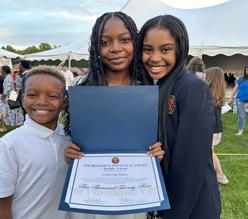



1
2
The following students were presented with major awards during our annual Middle School Closing Ceremony on May 23.


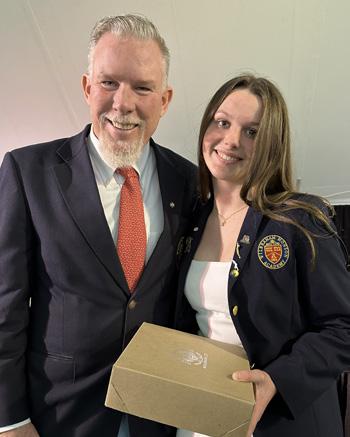

It felt like summer, but we knew fall was on the horizon when the Academy welcomed students to campus in late August to start our 221st year.
Our enrollment of 396 students included those from 28 different nations. We are proud to be “home” for all of them.
1 Our Girls Volleyball team opened its season on a rebranded court in Greenhalgh Gymnasium. 2 Isabelle Rivera ’25, left, receives her Senior Pin from Dean of Students Elizabeth Fontaine Squindo. Head of School Brian P. Easler, background right, shakes hands with John Crocker ’25. 3 Osezuwa “Zuzu” Abulu ’25, left, and Seoyun “Selina” Jeong ’25 proudly show off their Senior Pins. 4 Grayson Southwick-Hall ’27 shakes hands with Tim Harrington ’73 at Matriculation. 5 Rich Hall is the backdrop for the Faculty Procession prior to the start of Convocation Ceremonies in Alumni Memorial Chapel. 6 Nghi Anh “Kathy” Dang ’25 points with pride to the crest on her WMA Blazer. 7 Mikey Mannix ’31 receives help from Head of School Brian P. Easler while signing the Matriculation Book in Alumni Memorial Chapel. 8 Jiabei “Michelle” Huang ’27 receives congratulations from alumni during the Matriculation Ceremony. 9 Tayedza “T.J.” Jaravaza ’25 enjoys time at the Matriculation Ceremony. 10 The Class of 2025. 11 New students process past Griffin Athenaeum before entering Alumni Memorial Chapel. 12 Avery Vanderburg ’28 enjoys playing a name-the-flag game during New Student Orientation outside of Smith Hall.



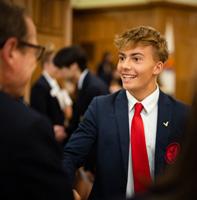
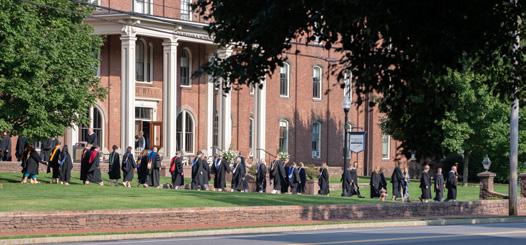

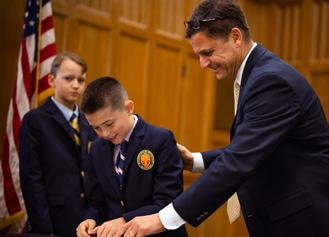
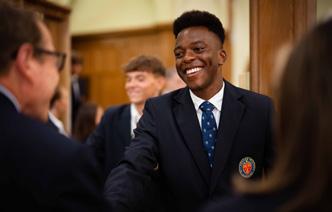
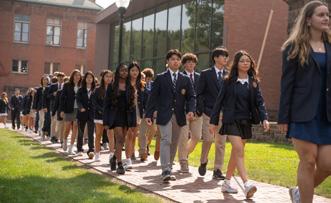

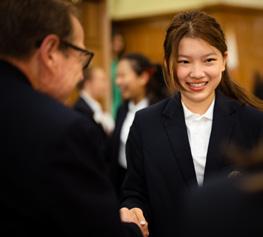
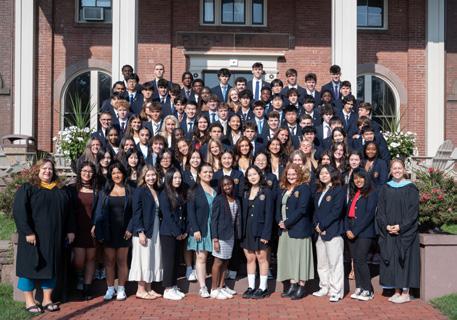

‘A simple, clear, modern approach that captures our At Home. In the World. message’
by bill wells
Director of Student Promotion
WWhile traveling to Wilbraham & Monson Academy for his job interview in March 2019, Art Director Chris Tinnesz got lost trying to find where to go on campus.
“I didn’t know where I was going because the existing signage wasn’t clear,” Mr. Tinnesz said.
Three years after being hired as part of WMA’s Marketing & Communications Department, and with his first experience on campus in mind, Mr. Tinnesz began mapping out a campuswide external signage project.
“The process began with a comprehensive list with pictures of all the signs on campus and an assessment of their decay,” Mr. Tinnesz said. “Those signs were installed in 2001, so many were in various stages of decay. We have over 60 exterior signs on campus and each needed two things: newly updated logos so it would be aligned to our updated branding initiative, and improvements in form and function.”
More than 60 new signs—funded by Mr. Mark R. Shenkman ’61M—were placed on campus in the Spring of 2024. They include three brick-based structures as drivers approach the unofficial entrances of WMA: two on Main Street and one on Faculty Street.
“The campus redesign project is finished and I’m really happy with the results,” said Mr. Tinnesz, who collaborated with WMA’s Facilities Department. “I’m confident the design solution and end product will serve the community successfully for many years to come.”
To many, a sign is simply a form of announcement. To someone who works in the arts, however, it’s so much more.
“Our exterior campus signage, like all signage, is very important and often overlooked,” Mr. Tinnesz said. “It says who we are. It speaks for all of us and is a reflection of us as a community. It begs the questions: Who are we? What do we stand for? What do we think of ourselves?
Campus signage should be a clear communication that’s (also) pleasing to look at.
“I think our campus signage successfully combines our proud yet complex history with a simple, clear, modern approach that captures our ‘At Home. In the World.’ message.”


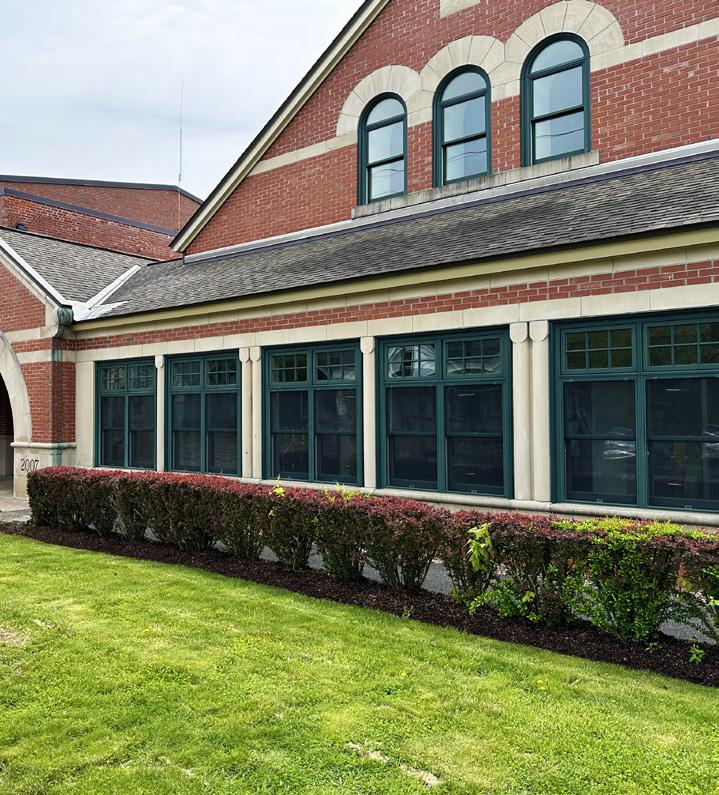


‘A
candidate had included another item that caught my eye. It was an image of a page from the yearbook of the American School in Lisbon (Portugal), where he had recently taught. In fact, the yearbook had been dedicated to him by the graduating seniors.
The adage “one picture can speak a thousand words” really held true in this instance because when I saw it I thought, “Wow, this is the person we need to excite students to take advanced science courses at the Academy.”

specifically, someone who could ignite interest in Honors and AP level chemistry.
After posting the position with several teacher recruitment agencies, I started to receive many applications. As I reviewed the dossiers that crossed my desk, one resume stood out from all the others.
Besides his curriculum vitae, letters of recommendation and academic transcripts, this
The picture showed a robust, fit young man with long hair and mustache of the era, holding a basketball. He struck me as someone who would be dynamic and relevant to students, but what impressed me most was the dedication that was printed on the page.
It read: “Having been with us for only one year, he has been able to gain the respect and friendship of the students. He has helped and advised us all in times of trouble. It is generally
felt that he is understanding and is able to communicate well with the student body, like few others have. His smile, personality and good humor have brightened many a gloomy day.”
My immediate thought was that, if those words are correct, I may have found exactly what I was looking for—a teacher who could relate to students and spark their interest in science through the courses he would be teaching. With a quick phone call to Florida, where he was living and working at that time, this Tewksbury, Massachusetts, native agreed to travel to Wilbraham with his family for a campus visit.
I still remember the day Charlie D’Avanzo arrived with his wife, Julie, and sons Paul ’04 and Andy ’07. Also visiting with the family on this trip was young Andy’s companion, Bunny, his stuffed rabbit. (Sorry, Andy, for embarrassing you in front of fellow alumni!). It was a great visit. Charlie accepted our offer of employment, and the entire Academy community began to know and love the D’Avanzo Family for the coming 35 years.
As I look back now, I must acknowledge how prescient those students at the American School in Lisbon were in dedicating their yearbook to Charlie D’Avanzo.
During his tenure at the Academy, Charlie D’Avanzo lived up to their description of him every single day during his career at WMA. Not only did the Academy gain a fantastic science teacher, student advisor and athletic coach, but also a future Dean of Students, founder of the Beech Tree Summer Camp and Middle School Director.
The past 35 years have been a period of incredible growth and success for the Academy, and “Mr. D” (as he is known), was one of its driving forces. Due to his energy and commitment, he leaves the Academy in a much stronger state than it was upon his arrival.
Perhaps the most accurate part of the Lisbon dedication states that Charlie “brightened many a gloomy day.” We agree and have even dubbed it the “Mr. D Effect” here at the Academy. Mr. D’s entrance into a room is like a Fourth of July parade.
First, you can hear him singing some crazy song as he approaches and then you hear his big key chain clanging as he comes into the room. He bursts out with one of his stock greetings depending on the day of the week: “Have a Marvelous Monday,” “Enjoy this Terrific Tuesday” or “It’s a Fabulous Friday!” I know I will miss those greetings.
It has been said that great teachers teach students, not courses. In other words, the really effective teachers are more concerned with the progress and growth of their students and their relationships, and not solely in covering as much course content as possible.
To be successful at this, a teacher must earn the respect and trust of the students. This has always been a hallmark of Mr. D’s approach to students. Wherever he has taught—Mr. D in the classroom, Mr. D in the laboratory, Mr. D on the playing field—he inspires respect and friendship, as many Academy students have testified.
He has always been a communicator with students who tries to understand what motivates them. Through this personal approach, he has
nurtured healthy, positive and long-term relationships with hundreds of Academy students over the years.
The Cushman Award, one of the Academy’s two highest awards given to graduating students each year, has the inscription on its plaque outside Lak Dining Hall that reads: “Live Clean. Speak True. Work Hard. Play Fair.” Charlie D’Avanzo has always lived up to these four challenges, but most importantly has always had the conviction to “speak true.” He has taken this responsibility as a faculty member to speak up at faculty meetings on issues affecting the school.
He has been a source of good advice to Heads of School and other administrators. Often the school has profited from Charlie’s ability to see a
problem from a different angle than the rest of us. Trusting in his forthright approach to issues affecting the school community, the faculty elected him to the Faculty Committee last year.
At the end of this past academic year, the Class of 2024 asked Mr. D to give the address at their Senior Banquet. In Charlie’s message to the graduating class, he encouraged them to appreciate the role of “guardian angels” in their lives as he has. Charlie’s “guardian angels” were all the people who have played a role in developing him into the compassionate and thoughtful educator that he is.
I was present at that dinner, and I was very touched by Charlie’s speech as he said that one of his ‘guardian angels’ was my late wife, Jane McNamara Kelly. Jane and Charlie had been

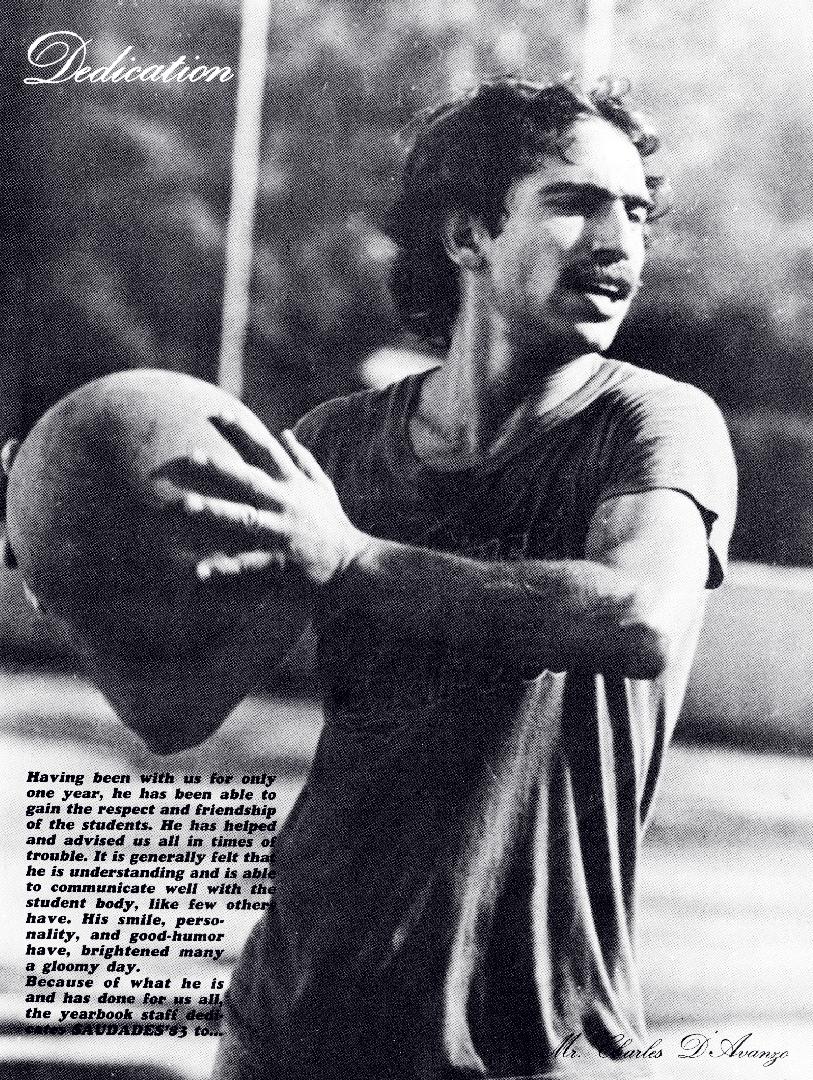
longtime colleagues in the Science Department and had adjoining offices on the second floor of Mattern. They were a source of advice and inspiration to each other in their work together with our science students.
In mentioning Jane and her friendship with Charlie, I cannot help but recall the day that she passed away. Jane had been stricken with ovarian cancer. Although she fought courageously against this disease, she eventually passed away from it while at home on campus under hospice care during the morning of April 27, 2005.
The Kelly Family at that time was living in the white house on Mountain Road, which is now the Head of School’s house. The D’Avanzo family was living nearby, in the white house

that used to be located next to Alumni Memorial Chapel. After notifying the school about Jane’s passing, I waited that morning looking for a vehicle that would be arriving from the funeral home. Through the front window, I suddenly saw the door to the D’Avanzo house burst open and a distraught Charlie, who had just heard the news, began to run to our house. He came in, knelt beside Jane and said a prayerful farewell. He then gave consolation to me and my three daughters. To me, that shows another characteristic of
Charlie D’Avanzo which all of us at the Academy have come to experience and appreciate in our own way: He is a true and loyal friend.
As a school, we are sad that Mr. D is leaving us, but we wish him and (wife) Julie much happiness as they move to the San Diego area to be near their son Andy and his family. Their granddaughter Maddie and her soon-to-arrive little sister are in for a real treat with Mr. D and Julie on the scene. Good luck, Charlie and Julie, and thank you for what you have meant to our school.
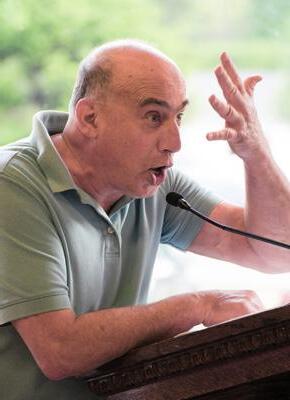

‘I will continue to pay it forward’
Wow! We made it to San Diego! The “we” is Julie and me, Andy (of course, as he was already here) and Paul, who flew out to join Julie and me as we were setting up our new “digs” in San Diego.
We all sat down the other night for our first look through the beautiful book the Academy worked to create connected to the wonderful adventure we shared at WMA. (Granddaughter) Maddie sat in my lap for a good portion of the viewing, pointing to every photo of, well let’s just say, an older gentleman and would ask, “Grampa?”
The book is wonderful and magical, like walking through a butterfly garden. So many beautiful moments and memories gracefully and delicately dancing around us as we turned the pages. I will treasure it always. Thank you, (Director of Stewardship & Planned Giving) Sean (Valentine) and to all the butterflies found within the pages. You are beautiful and precious to me.
Our Academy aims to invite people from all over the world, of all ages—from the faculty children who grace our campus to chronically challenged old curmudgeons such as myself to
live, and learn and grow, together. Think about that! What a noble goal! What a tremendous challenge! What a worthy endeavor!
I am so appreciative to have been a part of that for 35 years. You have all taught me so much and enriched my life beyond measure. I am happy to know that there were times I was able to reflect some of that back to you. I am a strong believer in paying things forward.
In my final formal address at our Academy I shared with our Class of 2024 my guardian angels. Those people in my life—from my Great Aunt Katie, to Ms. Laura Potts, to the Covelli Family to Jane Kelly—who were and are the people I try to honor with how I conduct myself on a day-to-day basis. Your sharing with me that there were those times when I was able to pass along their gift to me to you, when our paths crossed at WMA, touched me deeply.
Thank you, my WMA Family. You know that I will continue to pay it forward. I invite you all to join me.
Cheers!
se N t A pri L 15, 2024
Dear Friends,
I have the bittersweet job of announcing that Mr. Charles “Charlie” D’Avanzo will retire at the end of this academic year. After 35 years at the Academy, he and his wife, Julie, are setting out on the next part of their journey: moving to California to be full-time grandparents.
When Charlie made his announcement at School Meeting Monday morning, there was an audible groan of shock and disbelief from the students. For them, “Mr. D”, as he is affectionately known, has been a fixture of the student experience at WMA for so long as to be considered a living legend. He was someone they heard about from siblings— or even parents— and who served as a continuum from generation to generation. They understand, as we all do, that with his retirement, a special chapter in the Academy’s history is closing.
Charlie is one of a handful of current faculty members who were here before I arrived in 1998. By that time, he had nearly a decade of service to the Academy under his belt, and he taught me
what it means to be part of a school like this. As a science teacher, dorm parent, advisor, coach, Dean of Students, and Director of the Middle School, he modeled how to be a member of a true learning community and an outstanding person. He has been an example for countless students and faculty over the years, and his collective influence on the Academy is simply immeasurable.
I am truly happy for Charlie and his family, but it is also difficult to imagine WMA without him. We talk often about WMA feeling like home, and it’s hard to imagine home without him in it. But, while he may not be in residence, he will forever be part of our WMA family.
We will celebrate Mr. D’Avanzo’s retirement at Commencement on May 25.
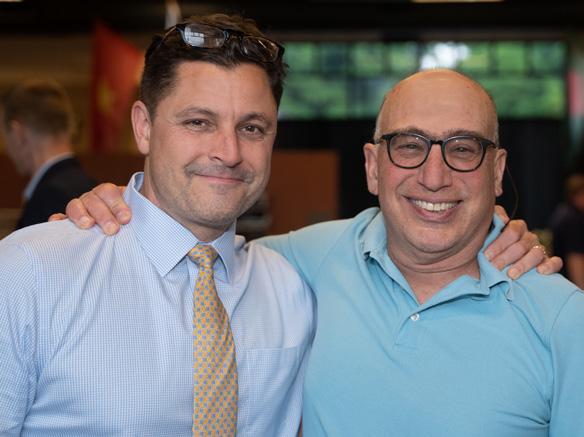

“I loved studying AP chemistry with you and still remember the warm welcome you showed us every time we entered your class. My interest in chemistry was due to your enthusiastic explanations and fun lab experiments. Thank you for making my year at WMA a memorable experience.”
Ms. Usa Bun ’21
“I hope you realize that you touched so many lives! You were the one who made me enjoy physics with your never-ending energy, know-how and love for this discipline! You will forever be in our hearts with the best memories we got from WMA!”
Ms. Liliana Denise Espirito Santo ’05

“There are so many wonderful memories I have of you. You are an amazing teacher/ mentor. Your kindness, love of teaching and being such a wonderful human impacted my life in ways I cannot begin to explain. It’s been almost 25 years since I was in your AP Chem class and I randomly find myself singing to this day, “Johnny was in the lab one day, now Johnny is no more. What Johnny thought was H2O was really H2SO4.” I fondly remember how you let me be the artistic weirdo in your classes, and never once tried to stifle my creativity. You gave me a space to be myself. You pushed me to be the best version of me. You are truly one of a kind in so many ways, and this is the end of an era. Thank you for being such a genuine, kind and caring human. I’m blessed to have such a wonderful birthday twin! You are a true gem of a teacher, and it was an honor and a privilege to be one of your students.”
Ms. Kristin J. Chaconas ’99
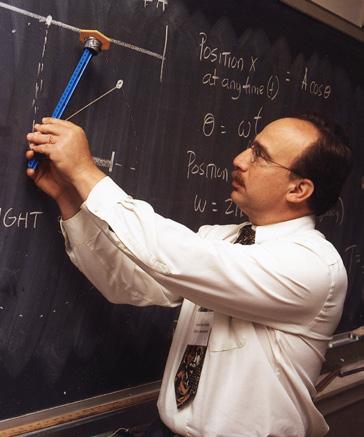
“Your enthusiasm, love of life and learning and general light made a huge impression on me. You are one of the main reasons I wanted to join our community. You embody WMA’s best characteristics of community, hard work, curiosity, passion and continued growth. Thank you for helping me grow into the person I am today and am becoming.”
Ms. Emily A. Dromgold ’17, Current Faculty
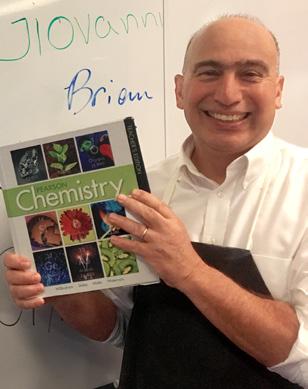
“What a legacy— so many lives touched and lifted through your work, commitment and the enthusiasm that you bring to every space. Whenever I think of WMA, I think of your ability to see the full range of experiences that each student carries and your unique way of showing us our own strengths. I think I speak for anyone who got to be your student or advisee: with empathy and unwavering positivity, you gave us (and still give us) tools to push forward through any circumstance and to keep challenging ourselves.”
Dr. Jacob A. Dyer-Spiegel ’97

“Thank you for all the words of encouragement and the laughs we had. Though I was only in your class for a year, you taught me more than just chemistry, but about what it means to be a good person. Thank you for everything. Your impact will reside with me for many years to come.”
Ms. Jessica L. Ethier ’23
“I remain extremely grateful to you for your leadership and support. I will always appreciate your remarkable blend of humor, enthusiasm, wisdom and conviction, both in the classroom and outside of it. You made a real impact on my time at WMA and my life.”
Mr. Jonathan W. Giokas ’95
“You always found a way to impress some wisdom upon me. For that, and for your persistent passion and energy, you were more influential to me than you’ll ever know. When I think of why I want to continue my education and go to grad school, why I’d absolutely love to be a teacher one day, I think of you. You made me love learning and you showed me what good leadership looks like, and I’ll be reaping the benefits of that for the rest of my life.”
Mr. Nicholas J. Gourley ’18
“Your enthusiasm and love for science was a big reason for me choosing to pursue particle physics in college and grad school. I will always remember your demos in class, and your coaching of our team in ‘As Schools Match Wits.’”
Dr. Jonathan T. Insler ’99
“Thank you for all the life lessons and support at WMA. You helped me grow immensely as a student and as a person. As a teacher, I often think back to those who inspired me along my own educational journey. I aspire to be a teacher as authentic, jovial and kind as you always were.”
Ms. Lindsay K. Jagodowski ’03
“You were the most positive and upbeat teacher I ever had. I never had a more Marvelous Monday or Terrific Tuesday or Happy Half-Day Wednesday or Super Thursday or Fantastic Friday than those I got to share with you.”
Mr. Jack H. Perenick ’21

“Mr. D” has been a part of the fabric of WMA since 1989, when he began teaching science here. Here is a look at some highlights of his career. career Science Teacher 1977–1982 Amherst Junior and Senior High School, Amherst, Massachusetts
1982–1984
American International School-Lisbon, Carnaxide, Portugal
1984–1985
Brillantmont International School, Lausanne, Switzerland
1985–1989
Spanish River High School, Boca Raton, Florida
At Wilbraham & Monson Academy 1989–2024 Faculty, Science
Additional WMA highlights 1992
Co-founder and director (approximately 10 years) of Beech Tree Summer Camp
1992–1996 Dean of Students
2005–2015 Director of WMA Middle School
Coaching highlights Boys Varsity Basketball coach, 16 years per S onal Education
Bachelor of Science, University of Massachusetts Amherst
Family
Wife, Julie, and sons Paul ’04 and Andy ’07
in s C ien C e
Alumna living the ‘Marine’ dream
b y sean Valen T ine
Director of Stewardship & Planned Giving
WWhat would your kindergarten self say about your career?
Well, for Sara Young ’07, it would probably be “nailed it!”
That’s because Sara is living out exactly what she dreamed of doing when she was a kid.
As a marine scientist with the National Oceanic and Atmospheric Administration (NOAA), Ms. Young oversees the issuance of scientific research and professional photography/ videography permits for marine mammals. Her focus is pinnipeds (i.e., seals and sea lions), and her area of responsibility is the entire coastline of the United States.
“No joke, I said I wanted to be a marine biologist when I was 5, and I never deviated from that statement,” Ms. Young said. “My one unexpected twist is that I grew up declaring I would study whales. Now I work with seals, so I was close.”
While Ms. Young was enthusiastic about her career trajectory, her path to WMA was less preordained.
“I grew up in Connecticut and Massachusetts, but my family didn’t move to Wilbraham until I was nearing high school,” she said. “I’d been in a small Catholic school before, and Minnechaug (Regional) High School (in Wilbraham) was huge and intimidating by comparison. But then I thought, ‘What about that WMA place?’ and asked my parents if we could explore it.”
With a dream and the drive, Ms. Young applied for one of the highly sought-after Bicentennial Scholarships, a financial aid program with a merit-based component that launched for the 2003–2004 school year as part of the Academy’s
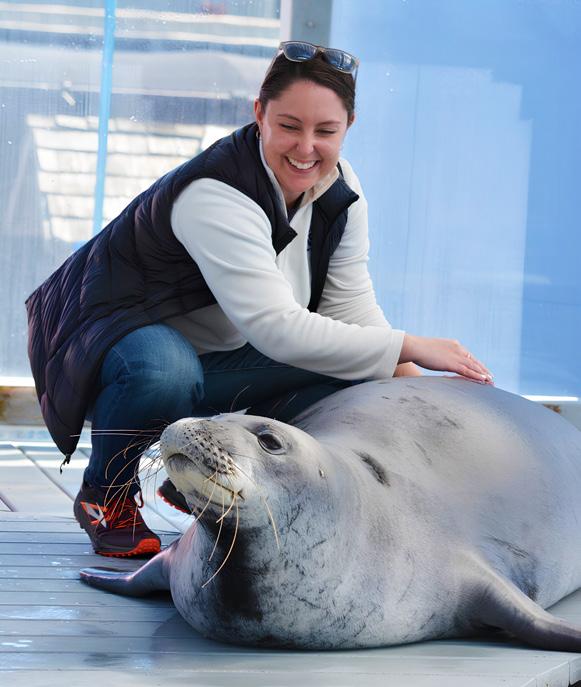
200th anniversary celebration. Ms. Young was one of the inaugural recipients.
“I never would have been able to have attended without that, and the education I got at WMA was so important to what I was able to do later,” she said. “So really, that scholarship program is what got me going on my journey.”
To say Ms. Young did well at WMA would be putting it mildly. She excelled academically and was elected to the Cum Laude Society. She was a varsity swimmer, performed in the Academy Players spring musical all four years, and sang in the choir.
“I have a lot of faculty to thank for my success, specifically Mr. D’Avanzo and Ms. Donohue,” Ms. Young said. “While I wasn’t destined to go into physics, Mr. D taught me that following my passion rather than what I’m most talented at would get me far. He was right.
“Ms. Donohue was my advisor and gave me so much great career advice. She was in the new CEGS Department and a NYC transplant looking to leave finance and have a change of pace.
She had a lot of wisdom to impart about being a forceful presence in the workplace, even in male-dominated fields.”
In the yearbook, Ms. Young’s Senior Superlative (shared with classmate Joshua Binney ’07) was “Most Likely to be the next World Leader.” Apparently, the faculty agreed, as Ms. Young was the 2007 recipient of the Frank Chapin Cushman Memorial Award, regarded by most as one of the top two awards given by the Academy.
“Truthfully, I don’t remember much about that moment,” she said. “Our choir, Mosaic Harmony, was performing a few numbers on Prize Day, and I was mostly worried about messing up!”
Although she may not be a “world leader” in a geopolitical sense, she’s certainly making a difference in the world of marine mammal conservation. After attending the University of New England and the University of St. Andrews in Scotland (studying marine biology, of course), Ms. Young became part of a 10-person team within the NOAA Fisheries Office. The team works on scientific research permits under the Marine Mammal Protection Act (MMPA). If you want to GPS tag harbor seals in Maine or film a documentary on the parenting tactics of California sea lions, you start with Ms. Young.
“My job is to implement the permitting process from start to finish,” Ms. Young said. “I receive a researcher’s application for a permit, guide them through the review process, and coordinate the public comment period and reviews by agency experts. Ultimately, I’m part of the team recommending whether to issue the permit based on MMPA criteria. If we do, I then review the reports required by the permit.”
Until recently, Ms. Young worked out of NOAA’s main office in Washington, D.C. During the pandemic, the organization began allowing certain jobs to be done remotely. So, Ms. Young, her husband, Ben Terrett, and their young
daughter moved back to New England to be closer to family.
“I was born and raised here; I am a New Englander in my soul,” she said. “Plus it’s been really helpful with daycare.”
When not working on the critical process of permitting, Ms. Young is out in the field doing the kind of things her 5-year-old self would have gone bonkers over.
“I was recently in California with a team monitoring baby elephant seals,” she said. “One of our jobs was to check their vitals and weigh them. Believe me, baby elephant seals weigh a lot.”
Up next for Ms. Young is a trip with a colleague’s research team to test a less invasive, highly innovative way of tagging whales: dropping the tags from drones.
Tagging whales provides much needed research data, but the current process can be pretty disruptive for the animals. “But the drone-dropped tags attach using suction cups, and we can keep the boat way back. Better for everyone!”
Asked to share a bit about the importance of her work to protect our natural resources, and why she finds it so fulfilling, Ms. Young has macro and micro level answers.
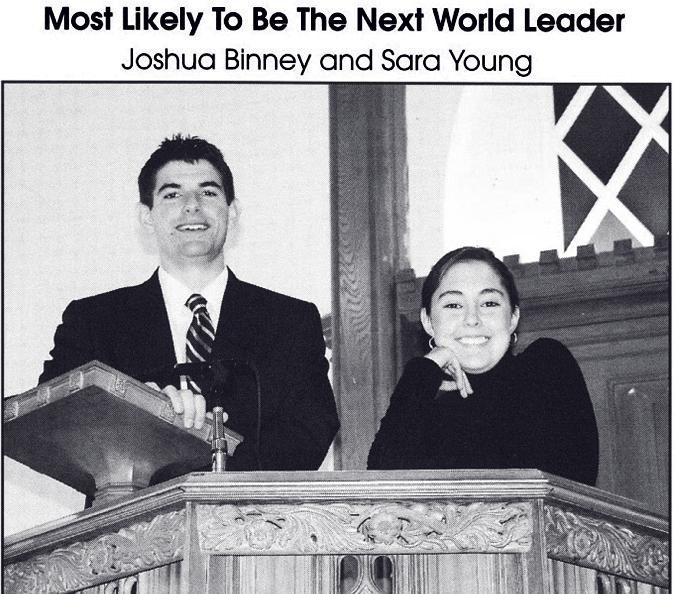
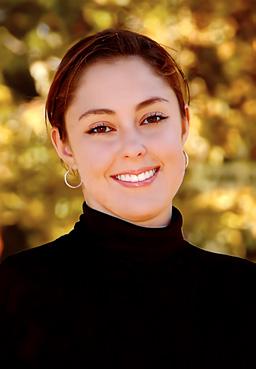

“I find the work important and fulfilling from an environmental perspective. Congress laid out specifically that marine mammals need to be protected and that research is essential, but also needs to be well-regulated. Seeing your job description printed in the law helps impress the importance of the work even on tough days. On a personal level, I find my job fulfilling because it’s the perfect balance I sought but never knew was achievable. I always wanted to be a marine biologist, always thinking academia was the only plausible final destination. In college though, I was drawn towards law and policy more than I expected—this job is the perfect amalgamation of science and policy for me.”
So, if you ever see a seal or sea lion, be respectful, admire it from a distance and thank Ms. Young for helping to keep them safe for future generations.
Editor’s note: Ms. Young’s views are her own and do not represent those of the federal government or NOAA.
‘Embrace the breadth of experiences available to you’
b y hea T her hamel ’08 Director of Alumni Relations
FFrom the quiet classrooms of Wilbraham & Monson Academy to the bustling innovation hubs at Ford Motor Company, John Bilezikjian ’88 has carved a remarkable path in the electrified vehicle technology field.
Currently a high voltage traction battery system supervisor at Ford, Mr. Bilezikjian’s journey is a testament to his incredible drive and determination, the power of a well-rounded education and the impact of a supportive academic environment.
We had the pleasure of catching up with Mr. Bilezikjian to learn more about his day-to-day responsibilities, the role of science in his work and how his time at WMA helped shape his career.
Mr. Bilezikjian’s role at Ford is as dynamic as the technology he works with.
“My role spans from concept development to production of batteries for our hybrid and plug-in hybrid vehicles,” he said. His responsibilities include managing a team that collaborates across Ford to define, design and develop complete battery systems. He is in the early ideation phase of a new battery project, a period he describes as “very dynamic, even chaotic.”
In this phase, Mr. Bilezikjian and his team spend considerable time brainstorming and translating the anticipated needs and desires of
future customers into technical requirements. This involves a mix of hand sketches, quick calculations and sophisticated simulations.
“We iterate over and over until all the attributes are balanced or we determine the project is not viable,” he said.
Once a project moves beyond ideation, his role shifts to a more disciplined approach focused on finding suppliers, building and testing prototypes, and setting up production.
“Working at a 120-year-old company to develop completely new electrified vehicle technologies brings a lot of excitement and challenges,” Mr. Bilezikjian said.
The traction battery is one of the largest and most expensive parts of a vehicle, and the technology is rapidly evolving. Balancing a long- established company’s legacy with a startup’s agility is no small feat.
“Billions of dollars are invested in bringing the project to life, yet consumer acceptance is still in the growth stage,” said Mr. Bilezikjian, highlighting the delicate balance between innovation and market readiness.
Science at the Core Science is integral to Mr. Bilezikjian’s work.
“Science and engineering permeate most of my daily work,” he said.
From analyzing simulation results to collaborating with electro-chemists and materials scientists, Mr. Bilezikjian relies on a deep understanding of scientific principles. In his previous role, he was responsible for the system
that cools the battery in the Mustang Mach-E and F150 Lightning electric vehicles.
“We work on the physics—heat generation and heat transfer—so customers can enjoy vehicles with exciting acceleration and speed, fast charging rates and long battery life,” he said.
Staying updated with the latest advancements in battery technology is also a crucial part of Mr. Bilezikjian’s job. He reads technical articles, attends industry conferences and collaborates with global suppliers at the forefront of their technologies. This continuous learning ensures that he and his team remain at the cutting edge of innovation.
Mr. Bilezikjian’s journey in science and engineering really began when he was in second grade when he became the “student teacher” for the science period. To give you an idea of his commitment, he shared this memory:
“I can remember being in class one day when it was time for science, and my teacher looked at me and said, ‘John, do you have anything for science today?’ I didn’t and explained that, and she said, ‘OK, no science today!’” Even then, Mr. Bilezikjian played a crucial role in moving the needle forward.
He was recommended to apply to the Academy where he could be more challenged academically. Although unsure at first, he quickly knew that WMA was right for him and went on to spend the next six years here.


“WMA’s small class sizes, breadth of academic classes and extracurricular activities gave me an ideal environment to learn and grow,” said Mr. Bilezikjian, who fondly recalls taking AP Calculus and Physics and six years of Latin. “I worked on the Atlas and Rubicon, played lacrosse, went spelunking with Mrs. (Emily Davis) Mobley (a world-renowned cave explorer and teacher at WMA), and even convinced WMA to let us start a rock/jazz band in lieu of one semester of athletics—we even put on a concert in the Chapel.”
These diverse experiences helped Mr. Bilezikjian gain acceptance to Cornell University’s Mechanical and Aerospace Engineering program, where his interest in hybrid vehicles truly took off.
“At Cornell, I co-founded a Hybrid Electric Vehicle student car project, which went on to win a national competition sponsored by the Department of Energy, Society of Automotive Engineers (SAE) and Ford,” he said.
This project was a pivotal moment in Mr. Bilezikjian’s career, setting the stage for his future in vehicle electrification.
From WMA to Ford: A Career Path Defined by Innovation
Mr. Bilezikjian’s career journey from WMA to his current role at Ford is a fascinating one. After graduating from WMA and Cornell, he worked at a Japanese automotive component supplier, designing electrical components for Chrysler and Ford electric vehicles.
In 2000, he joined Ford’s hydrogen fuel cell vehicle program, launching a fleet of Ford Focus sedans powered by compressed hydrogen gas.
“In 2007, I moved to the hybrid battery team, developing Ford’s first in-house designed and manufactured lithium-ion battery for the Ford Fusion, C -Max and Lincoln MKZ hybrid vehicles,” he said.
Mr. Bilezikjian’s motivation to specialize in hybrid vehicle battery engineering can be traced back to a serendipitous moment at Cornell.
“In my junior year at Cornell, I was standing in front of a bulletin board getting ready to sign up for the Formula SAE race car team,” he said, before a friend mentioned a new hybrid electric vehicle competition established by the U.S. Department of Energy.
“When I saw the opportunity to do something new and challenging, with the chance to make the world a better place, I was hooked,” Mr. Bilezikjian said of the moment that set him on the career path that has brought him to where he is today.
While Mr. Bilezikjian couldn’t divulge details about his current projects at Ford, he hinted at exciting developments on the horizon.
“Unfortunately, I cannot discuss what I am working on right now, but I think it will satisfy an exciting and highly desirable space in the vehicle market,” Mr. Bilezikjian said of a secrecy that only adds to the anticipation of the innovations he and his team will unveil in the coming years.
For Mr. Bilezikjian, the most rewarding part of his job is the opportunity to make a tangible impact on the future of transportation.
“The chance to make the world a better place through innovative vehicle technology is incredibly fulfilling,” he said.
This passion for innovation and dedication to pushing the boundaries of what is possible are traits that were nurtured during his time at WMA.
Mr. Bilezikjian’s advice to our WMA community is: “Embrace the breadth of experiences available to you. You never know which opportunity will spark a lifelong passion.”
His journey from WMA to Ford shows how a strong educational foundation can lead to an exciting and impactful career in science and engineering.
Mr. Bilezikjian’s story highlights the power of a WMA education and the importance of following your passions. As WMA continues to nurture the next generation of innovators and leaders, his achievements remind us of what’s possible with dedication, curiosity and a supportive academic community.
• Yearbook, 1988

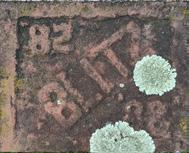

Paying it back by trying to make chemistry relevant
OOne could say that Phil Esempio ’84, who teaches chemistry at Liberty High School in Bethlehem, Pennsylvania, began his scientific career in a cave. As a student at Wilbraham & Monson Academy back in the late 1970s and ’80s, Mr. Esempio would go on the famous caving trips the Academy sponsored in those days. These trips were led by former English faculty member and world-renowned spelunker Emily Mobley. Another regular on those trips was former Physics faculty member Joe Alvord.
On one of those trips, when Mr. Esempio was in Grade 9, Mr. Alvord struck up a conversation with him about a science fiction book he was reading. Although he did not have Mr. Alvord as a classroom teacher yet, a friendship based on mutual interest in science fiction developed. Mr. Alvord would often give science fiction books to Mr. Esempio to read, and they would have many conversations about those books and the scientific concepts in the stories.
Eventually in his senior year, Mr. Esempio took Mr. Alvord’s Physics course. According to Mr. Esempio, it turned out to be the most dynamic course he had at the Academy. He credits Mr. Alvord with the ability to take an advanced scientific concept and make it relevant.

The small class size of only eight students ensured plenty of time for in-depth conversation on such weighty matters as “Einstein’s Theory of Relativity.” This class and Mr. Alvord’s ability to teach inspired Mr. Esempio to attend Rensselaer Polytechnic Institute to study Physics.
After serving in the Army for six years and 18 years in the plastics industry as a quality process engineer, Mr. Esempio went back to school. He earned a bachelor’s degree in biochemistry at Wilkes University and a master’s degree in chemistry at Lehigh University. Mr. Esempio continued on at Lehigh with the intent of earning a doctorate in chemistry, and in that process he became a teaching assistant at the university.
Mr. Esempio enjoyed teaching at the college level, but he came to the realization that in his mind these students were not really prepared to do science. The students he taught lacked criticalthinking skills. Their high school education had only trained them to memorize and regurgitate facts. They were not able to analyze data and see trends and come to legitimate scientific conclusions.
Fortuitously, at that time the state of Pennsylvania recognized the shortage of trained high school science teachers in the state school systems and created a program to train more high school science teachers. Mr. Esempio left his doctoral program and used the support of this program to earn a master’s degree in science education. He then switched his focus to teaching high school science. After a stint in the Allentown, Pennsylvania, school system, Mr. Esempio transferred to his current school in Bethlehem.
Mr. Esempio enjoys teaching at Liberty High School because the student population is very diverse. He particularly relishes the challenge of introducing students who never showed much interest in science how relevant chemistry is in
everyday life. Mr. Esempio’s approach to teaching is constructivist.
Instead of having his students passively memorize facts, rules and scientific laws, he devises classroom activities and experiments to help students learn and construct on their own the scientific knowledge which he wants them to learn.
Mr. Esempio typically begins his chemistry courses at the beginning of the school year by asking the students who might not appreciate studying chemistry to name for him one job that a person can do without chemistry. In that discussion he then shows them how all jobs, and much of everyday life, are somehow affected by the principles of chemistry. After that discussion he has them just where he wants them—ready to become scientists and learn chemistry.
In addition to his classroom teaching, Mr. Esempio is also involved in the school’s Science Olympiad. He is particularly excited about his work with the Pennsylvania Junior Academy of Scientists. This activity trains students to do

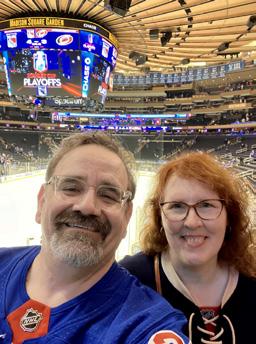
scientific research like professional scientists and to present their research and conclusions in front of a panel of judges.
Mr. Esempio enjoys the public service aspect of teaching. He takes satisfaction from the opportunity to work with many different students from all walks of life and being able to excite them about science.
From talking to Mr. Esempio and hearing his enthusiasm and excitement about teaching chemistry, I cannot help but feel that his passion is going to be contagious. I also feel that under Mr. Esempio’s mentoring some serious young scientists will develop who will try to use the knowledge and skills they learned in his classroom to make the world a better place in which to live.
Just as Mr. Alvord made physics relevant to him and inspired him onward to a career in science education, Mr. Esempio is now paying it back by trying to make chemistry relevant and meaningful to his students.

alumni in s C ien C e
‘The community at WMA was like family’
b y h ea T her h amel ’08 Director of Alumni Relations
TThe path for Mark Overdevest ’12 to Wilbraham & Monson Academy wasn’t a conventional one. Hailing from New Zealand, his passion for basketball brought him across the globe.
“When I was 16, I moved to the (United) States to play basketball,” Mr. Overdevest said. “I played in New Zealand a bit, but my principal, who was also my basketball coach, had connections in America and managed to get me a spot at a high school in Florida.”
After spending years honing his skills and his studies in Florida, Mr. Overdevest sought new opportunities and found his way to WMA for a postgraduate year.
The Academy provided the perfect environment to flourish both academically and athletically. WMA’s commitment to fostering a close-knit, family-like atmosphere was evident in the relationships he built with his teachers and coaches.
Reflecting on his time at WMA, Mr. Overdevest fondly remembers: “I did take a lot of science courses. I liked chemistry and math. The community at WMA was incredibly supportive and gave me the foundation I needed to pursue my interests further.”
After graduating from WMA, Mr. Overdevest pursued a degree in chemical engineering at Worcester Polytechnic Institute. The transition from high school to college was challenging, but his time at WMA had prepared him well.
“Chemical engineering is pretty much taking raw materials and turning them into something that’s valuable,” said Mr. Overdevest, whose passion for transforming raw materials into valuable products set the stage for his future career.
Mr. Overdevest’s first professional role was with a food and beverage company in Springfield, Massachusetts. However, the demands of extensive travel eventually led him to seek a position that kept him closer to home. This search brought him to Nitto Avecia, a pharmaceutical company in Milford, Massachusetts, where he has been working for nearly five years.
At Nitto Avecia, Mr. Overdevest’s role as a process/project engineer involves the intricate process of manufacturing oligonucleotides— short chains of RNA and DNA used in various medical treatments.
“We’re a contract manufacturer,” he said. “Clients come to us with their products, and our internal team works with them to adapt their product to our equipment. As a process engineer, we help ensure the scale up from bench scale to full scale is achievable and successful. As the product gains momentum through clinical trials and is approved for commercial use, batch sizes tend to increase as demand increases.”
The work is meticulous, requiring careful qualification and validation of equipment and cleaning validation of equipment to prevent cross-contamination and ensure the highest quality of products.
A typical day for Mr. Overdevest is a blend of collaboration, troubleshooting and rigorous documentation.
“Half the job is customer projects,” he said. “We work with clients to ensure the equipment fits their


needs, whether they require small-scale production or large-scale runs of up to 60 kilograms.”
The other half involves maintaining and validating equipment, ensuring everything runs smoothly and meets strict regulatory standards.
Despite the complexities and challenges, Mr. Overdevest finds his work deeply fulfilling.
“I enjoy what I do now,” he said. “It’s definitely more chemistry-focused and more complicated than food and beverage, which is why I like where I am at the moment.”
Mr. Overdevest’s journey is a shining example of how the values and education instilled at WMA can shape a person’s career and life. The connections he made, the subjects he studied and the supportive environment all played crucial roles in his development.
• cLock Wise from top riGHt: Mark Overdevest ’12, son Andrew, daughter Aliana and wife, Laura.
• Mark Overdevest ’12, back row fifth from left, on the 2011–2012 Boys Basketball team at WMA.


“The community at WMA was like family,” he said. “It provided a solid foundation that I carried with me through college and into my career.”
Faculty like Ms. (Meg) Lenihan Hutcheson and Mr. (Mark) Fischer, who are still at WMA, left lasting impressions on Mr. Overdevest. At WMA, he immersed himself in a rigorous academic schedule, taking courses in AP Mathematics, AP English, AP Environmental Science and other sciences that fueled his curiosity and laid a solid foundation for his future studies.
Life at prep school for Mr. Overdevest was a blend of challenging coursework, athletic commitments and the camaraderie of a close-knit community.
Mr. Overdevest loved the Academy so much that he returned to help Mike Mannix coach the
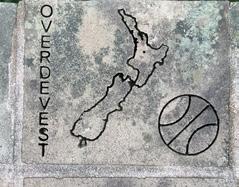
varsity basketball team for a season, and he enjoys coming back for alumni events or catching WMA’s basketball games. After just a year at the Academy, his dedication to the school and its community speaks volumes about the positive impact WMA had on his life, both academically and personally.
As Mr. Overdevest continues to navigate his career in the pharmaceutical industry, he remains grateful for the experiences and opportunities that WMA provided. His story is a reminder of the far-reaching impact a supportive and nurturing educational environment can have on a student’s future.
From the basketball courts of New Zealand to the cutting-edge labs of Nitto Avecia, Mr. Overdevest’s journey is a testament to the power of perseverance, passion and the enduring influence of a great education.
WMA left an impression on successful forensic scientist
b y s ean Valen T ine Director of Stewardship & Planned Giving
IIt’s 2 a.m. on a dirt road in rural Maine. State troopers, tipped off by a local resident, are checking out a deserted car. Preliminary inspection reveals it matches that of a vehicle used in a bank robbery earlier that week. Could it be the getaway car? Matching its tires to marks left at the scene would prove it.
Time to call in Brian Juengst ’01, Certified Crime Scene Investigator and Forensic Scientist with the Maine State Police Crime Laboratory.
“I specialize in prints: finger, palm, tire and footwear,” Mr. Juengst said. “As a forensic scientist, it’s my job to process crime scenes and items for the presence of impressions, and then analyze and compare that evidence to try and find answers.”
As a specialist in latent print examination, the fictional scenario is similar to numerous cases that have crossed Mr. Juengst’s lab table. Although Maine is big, the state police headquarters in Augusta receives the lion’s share of forensic work. Investigations of all kinds make their way there, and not just those requiring Mr. Juengst’s specialist knowledge. Any case involving blood samples, DNA tests or bullet matching is also sent there. Think CSI, but without the back-room drama.
“Portland and Bangor have small facilities that can handle minor things,” Mr. Juengst said. “But everything else comes to us. We’re the only lab in the state with the specialized equipment and highly trained staff to do this level of work.”

A fictional lead-in is extra appropriate as it was a novel, read during his time at WMA, that inspired Mr. Juengst to become a forensic scientist.
“It was senior year and I really didn’t know what I wanted to do or where I wanted to go to college,” he said. “I had some interest in law enforcement but just knew I’d make a lousy cop. Then I read a novel called “The Coffin Dancer,” which featured a forensic specialist and his assistant who solved crimes. I don’t recall if it was part of an English assignment or not, but the story just clicked for me, and I found the concept of forensic science fascinating. My dad told me that was a real thing you could study, and that was it. That’s what I wanted to do.”
Brian attended The George Washington University, earning his bachelor’s in criminal justice and then his master’s in forensic science. His first gig was as a contractor with the U.S. Secret Service, and he then spent five years as

a crime scene technician with the Waterbury Police Department in Connecticut.
Wanting a change, Mr. Juengst and his wife, Laurel (an emergency medicine physician and Maine native), relocated to Maine in 2014. He joined the state police soon thereafter.
During the past 10 years, he has honed his skills on hundreds of cases big and small. A glance at the “continuing education” section of his curriculum vitae reveals courses in advanced fingerprint distortion, digital processing of footwear evidence and staged crime scenes (i.e., telling real evidence from the intentionally misleading). He has also completed an eight-week intensive training program with the Royal Canadian Mounted Police.
“Every case is different and has its own unique challenges,” he said. “You’re never bored and always learning.”
Mr. Juengst was the first of three siblings to attend WMA, starting in Grade 6 in the Middle School. Brothers Kevin ’03 and David ’05 followed.
“I recall looking at Williston and MacDuffie too, but there was something about WMA that stood out to me,” Mr. Juengst said. “In any case, it was a great decision. I had an excellent time at the Academy. I really appreciated the diversity of students and faculty. If you invested in the school, the education and social experiences were amazing. There wasn’t a wood shop when I attended. Now there is that and a makers lab and robotics team. I’m jealous!”
Mr. Juengst was on the wrestling and varsity lacrosse teams, and he won the 2000 Coaches Award for his leadership in the pool as part of the varsity water polo squad. Interestingly, WMA’s transition from the Coachmen to Titans occurred during Brian’s senior year and, though at peace with the change, he still considers himself the former.
Perhaps the one thing that stands out most to Mr. Juengst now is the quality of the faculty and their teaching, especially Class of 2001 Faculty Advisor Charlie D’Avanzo.

“Mr. D always, always brought a ton of energy to everything he did. He was our class advisor from the beginning of ninth grade and it was always a hoot. He had an energy and passion that was infectious. No one cheered harder during our “Monster Truck” races than he did, even if he may have gotten some flour-bomb splash damage.”
In fact, it is the WMA faculty (and Mr. D, in particular) that Mr. Juengst draws inspiration from when he is called upon to testify and present evidence to judges and juries.
“I try to bring the same clarity to complex subjects that Mr. D used to,” he said. “Sometimes the topics can get a bit technical, and there is the possibility for eyes to glaze over. But if I can communicate my interest in the subject, and let my passion show through, then they are more likely to pay attention and digest what I am saying. I might not be as quirky in my approach as Mr. D was, but I try to be just as effective.”



‘WMA gave me the freedom to lean into the very things that make me, me’
When I returned to Wilbraham & Monson Academy in February 2024 for a job interview, it felt like stepping into a time capsule. Sixteen years had passed since I last set foot on campus, yet the memories came rushing back as if no time had passed at all.
Now, as the Director of Alumni Relations, I must confess I feel a bit embarrassed to admit my absence as my very job is dependent on alumni engagement. But without the time away, I’m not sure I would have ever come to understand the profound impact that WMA has had on my life. For that, I am deeply grateful.
In my early school years, I struggled to find my place. Teachers often said I wasn’t “cut out” for school. I loved writing and books, but I was often dismissed as a “social butterfly,” a euphemism for talking too much in class, and my report cards, generally filled with C’s, labeled me as an average student. I never really got in trouble or drew too much attention to myself, and I was slowly becoming insignificant. By eighth grade, I felt lost in the system and knew I needed a change.
That’s when I decided to apply to Wilbraham & Monson Academy. I wasn’t sure it would be better than my current situation, but I knew I was slipping through the cracks. WMA
at least 15 times in my years at the Academy, and I still don’t understand what letters have to do with math, but they cared enough to explain over and over again. The trust of being responsible for my schedule, going to class and advocating for myself taught me how to respect not only those around me but myself. WMA gave me the space to be an average student. And a thoughtful, athletic, compassionate and brave human.
If I had understood all this back then, I would have stayed more involved over the years (obviously!). But sometimes, it takes time to realize the true impact of an experience. I know I’m not alone in saying my life would be vastly different without WMA.
Not only did I learn how to trust myself, but I became a wanderlust, an all-state athlete, a storyteller, a curious listener and communicator, and a friend. I’ve gone on to get master’s degrees, run businesses and travel the world.
After high school, I went on to college in Boston and eventually found myself spending the summer in California at my mom’s house, where she introduced me to CrossFit. That summer sparked the next major chapter of my life.
was the only prep school I applied to and the only other option for me; thank goodness they let me in!
Starting ninth grade at WMA in 2004 was a turning point. While I remained an “average student,” I was no longer being forced into a predetermined mold, but instead encouraged to explore. WMA gave me the space to kick down the walls and be me. My “social butterfly” nature thrived in Gold Key, and being in a class of just seven students meant I could ask questions and truly engage with my teachers. I was no longer lost.
My math teachers (shoutout to Ms. Donna Viens) must have explained the Pythagorean theorem
I fell in love with CrossFit and pursued it passionately. After returning to Boston, I quit my college softball team, secured an internship at a local CrossFit gym, and eventually moved back to Western Massachusetts after graduation. I found another CrossFit gym where I would spend the next eight years working as a coach, head coach and eventually general manager.
My expertise in CrossFit led me to a prestigious coaching position in Natick, working with some of the top CrossFit athletes in the world. And then . . . COVID-19. The gym shut down, and we adapted with remote workouts as best we could; but eventually, I was laid off, bringing me back to Western Mass.
In 2021, I opened an Interior Design Business (seems out of left field, I know). I am a creative at heart, and the spaces I’ve lived in, if not expansive, have always been beautiful. It turns out that owning an interior design business in COVID-19 times was a great idea. Everyone sat in their homes all day and slowly realized they hated their kitchens. It was fast-moving, inspiring and I learned a ton, but I was alone all day. There was no one to bounce ideas off or go to when I needed support, no one to help with marketing or insurance or figuring out invoicing. I was missing being a social butterfly.
I had been scouring the Wilbraham & Monson Academy job postings for weeks when I saw an open position in Advancement. At the time, I was doing some side work for the Amherst Area Chamber of Commerce, and I felt like I had gained enough experience in development to apply. While I was interviewing for another role, the Director of Alumni Relations position became available. It felt like fate. After researching the job description and learning what it entailed, I knew I was made for the role.
Looking back, it seems so obvious that I would return to WMA. Wilbraham & Monson was the very
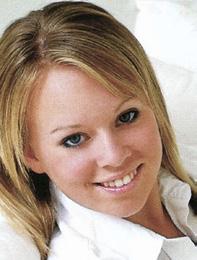

beginning of my journey in discovering who I am. It gave me the freedom to lean into the very things that make me, me. It allowed me to learn, grow and be, even though academia wasn’t my strongest skill. WMA provided me with a home, and now I have the privilege of giving back to our community.
While I was at WMA, I had no idea we even had an Office of Advancement, and if I did, I had yet

to learn what its role was. Some of our students might still feel that today, and I hope to change that. All the money given to the Atlas Fund or other campaigns directly benefits our students. It allows the school to pay incredible teachers who sit for hours with you to explain the Pythagorean Theorem and build new sports fields (although I’m still partial to our old dirt softball field right in the middle of campus,

regardless of the Rubicon Pond we get every spring). It allows us to pay for the incredible facilities staff who keep the Hill free of snow in the winter so our boots don’t get too wet and it goes into scholarships for students who maybe couldn’t afford WMA otherwise.
The Office of Advancement is the backbone of this school. I’m most excited about this role because I get to witness my contributions as the Director of Alumni Relations impact students just like me. I get to see resources pass from alumni to advancement to student experiences, and hopefully, get to be a tiny part of why someone feels seen and finds a home here at Wilbraham & Monson Academy.
I can’t wait to get to know you. If you want to chat or get the latest updates on what we’re doing in the Alumni Office, give me a call 413.596.9118 or email me at hhamel@wma.us.
b y sean Valen T ine Director of Stewardship & Planned Giving
In 1947, the Wilbraham Academy administration was looking for a way to define campus, perhaps through the addition of stone walls. Rodman Cart ’47W had the unique idea of adding students’ names to the top of the wall, and as they say, the rest is history. The collaborative ideas of these two men resulted in the creation of the Alumni Wall, which is now a series of walls in various parts of the campus on which graduating classes leave their Senior Stones.
From “The Hill” to the front of Rich Hall, along Main Street, down Faculty Street and now past the Athletic Center, Academy alumni have designed and left their own, unique 10-inch-by-7.5-inch mark on our campus. All told, approximately 6,600 Senior Stones are permanent fixtures of both individual and Academy history.


One reason why alumni are so excited to see their Senior Stone when they return to campus is that the design often represents a little window into who they were during their Academy days. This is certainly true for Lawrence “Larry” Savoy ’74.
Mr. Savoy has spent the last 39 years at UConn Health as a neuroscience researcher, specifically in neuroanatomy and neurophysiology. He is also a globe-trotter, having visited 43 countries on several continents. But his Senior Stone features no medical images nor any maps, flags or anything related to travel. Rather, Mr. Savoy’s stone displays his name and the twin theater masks of comedy and tragedy.
“I loved the theater program at WMA,” Mr. Savoy said. “I acted in seven plays during my time—of all different types—and enjoyed the creativity and teamwork it took to pull off a performance. I wasn’t the best athlete, so theater was my outlet.
• A 1974 yearbook photo of Mr. Savoy, far left, with his classmates and science faculty member Mr. Michael Olmstead, center.
It was a huge part of my life, so it was an obvious choice for my stone.”
Mr. Savoy’s journey to Wilbraham & Monson Academy has a familiar ring to it: an underperforming student getting lost in public school, who flourishes once exposed to the rigors and community of the Academy. Such is the background of many an Academy student even today.
“I wasn’t in what I would call a real learning environment,”
Mr. Savoy said. “People around me were drifting along with the tide or not being held accountable. The 50-kid class size was discouraging and I was doing poorly, academically speaking. My folks knew I could do better. Frankly, I think the Academy took a real chance on me. Suddenly I was in a place where you couldn’t hide. The small class size really helped. People cared and wanted you to succeed, but you had to work to earn it! And I did work. I ended up graduating near the top of my class.”
Larry had a hand in Academy Players performances of “Dracula,” “Twelfth Night,” “The Man Who
Came to Dinner,” “The Bald Soprano” and “Night School.” When not on or behind the stage, he wrote for Atlas, the school newspaper, and “participated” (his words) in basketball, soccer and swimming.
“I did wrestling, too, but not for very long,” he said. “I quit after I lost 60 pounds and then got paired with a 220-pound mountain of a kid. He just about took my head off. No thanks.”
So where did the medical/ scientific career come from?
“I was always interested in sciences, but the faculty at the Academy really encouraged me,” Mr. Savoy said. “People like Mr. (William) LaBelle, Mr. (Herbert) Mcintyre,
Mr. (Peter) Tuozzolo, and especially Mr. (Michael) Olmstead had a huge impact on me.”
The Academy also gave Mr. Savoy access to experiences he wouldn’t have had otherwise. Believe it or not, WMA was on the cutting edge of tech in the mid-1970s, and Mr. Savoy discovered he enjoyed computers and coding.
“My first computer course was during my senior year,” Mr. Savoy said. “Wilbraham was connected to Dartmouth College via a telephone line. On our end of the line was a Model 33 teletype with paper and ink, and on the other was an early computer. I would type in my basic program code and wait for a
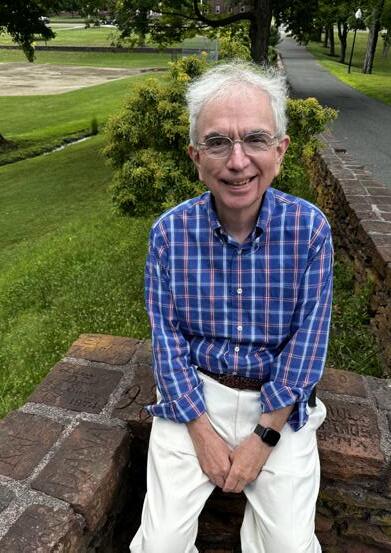
response to be typed back to me on the paper roll from the computer in Vermont. This was decades before the internet was publicly available.”
Mr. Savoy attended Boston College, graduating in 1978 with a bachelor’s in biology. From there he quickly migrated into the world of scientific research.
“My work at UConn Health has spanned the School of Dental Medicine and the School of Medicine, involving both basic and clinical research,” Mr. Savoy said. “I specialized in the areas of Taste, Smell, and Auditory Neuroanatomy and Neurophysiology. Later, I worked on a large NIH grant for Taste and Smell Research, in which I performed all the clinical testing for our patients.
“In 2012, I became a clinical research assistant in the Department of Orthopaedic Surgery, where I collected patient outcome data for the Hip and Knee Registry. Currently, I work with secure electronic medical records, where I extract patient data to ensure quality control and maintain standards of care.”
Search Mr. Savoy’s name in Google Scholar and some 20 research papers will pop up. He has also had a front-row seat in the development of medical research technology and data manipulation.
“When I started, each department used IBM electric typewriters, and NIH grants were submitted by sending 38 application copies via FedEx,” he said. “In 1991, I ran a coaxial cable through the ceiling of our lab to connect the computers to the T3 line, which was the backbone of the internet at the time. We still used paper forms for data collection as late as 2012, and it was all entered by hand into the systems. Today, of course, it’s all done via iPads.”
When asked what he would put on a stone representing his life and career to date, Mr. Savoy had an interesting answer.

“Maybe an Andry Tree, which is a crooked tree with a brace and is the international symbol of Orthopaedic Surgery,” Mr. Savoy said. “It comes from the French scientist Nicolas Andry’s 1741 book “Orthopedie,” in which he used the image of a sapling strapped to a stake to illustrate his ideas about the prevention and correction of deformities of the spine and bones of children.
“Either that or a globe. One of my best trips was staying on a farm in the Falkland Islands in the South Atlantic and seeing a large penguin colony. I took a picture of a mother with her baby.
“My next trip will be to Poland!”
every S tone ha S a S tory, and we want to hear your S ! Email us at alumni@wma.us to share your Senior Stone story and maybe you’ll see it in future issues of the magazine.


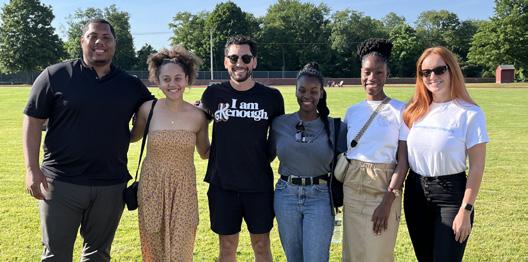

Alumni, family and friends were welcomed back to campus on June 1, 2024, for a day of activities and reconnection. Guests enjoyed time to watch or participate in Alumni Games, visit Senior Stones, retrace steps of old across campus and enjoy good food.
1 ShaCor Privott ’14, Ashlyn Crossfield ’12, Mike Mendes ’12, Amber Williams ’13, Arnelle Williams ’13 and Valerie Surkovaite ’14. 2 Rebecca Kakule ’25, right, escapes Miles Nallen ’15, left, and James Hughes ’08 during the Alumni Rugby Match on Corbin Field. 3 Alumni in action! Former players and current students reunite on the field for a spirited men’s lacrosse game. 4 Women’s Alumni Basketball Game participants. from Left: Hallie O’Toole ’22, Adela Cecunjanin ’24, Ella Chandler ’24, Head Coach Durelle Brown, Helen Assefaw ’14, Meagan M. Schuermann ’23, Cara Murphy ’22, Rhaymi P. Porter ’21 and Assistant Coach Jack Casey. 5 Miles Nallen ’15, left, and the Healy siblings Katherine ’25, center, and Sam ’29 showcase their skills and WMA spirit during rugby match action. 6 Alumni Men’s Lacrosse Game action. 7 John Adams ’20 at the rim during the Men’s Alumni Basketball Game.
8 Participants in the Men’s Alumni Basketball game. from Left: Head Coach Mike Mannix, John Adams ’20, Sean Seymour ’22, Mike Mendes ’12 with daughter Mya, Jaakko Juusela ’21, Steve Marcus ’10, Guy Pistone ’07, Matt Filipowski ’22, Khalil Kamara ’21, Deven Austin ’22, Ben Marcus ’12, Ryan Kranz ’25, Liam Murphy ’20 and Oliver Piantini ’21 with Mikey Mannix ’31.
9 Brendan Gillis ’87, left, with Faculty Marshal Don Kelly. 10 Adela Cecunjanin ’24 goes for a layup with Hallie O’Toole ’22 defending during the Women’s Alumni Basketball Game.
11 from Left, top roW: Tim Murphy ’85, Sean Nelen ’86 and Matthew Schuermann P’24; front row: Kevin McMahon ’85, Danny Brown and Craig Chandler P’24.



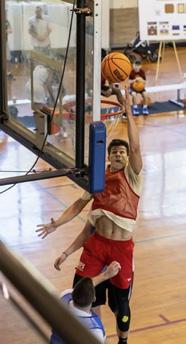





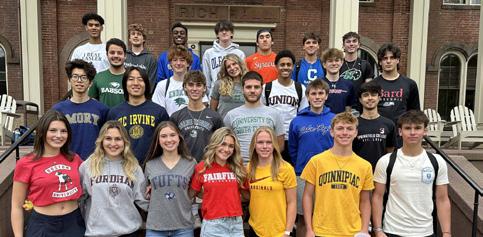

Campus was alive during our Spring Trimester in 2024. Here’s a look at a handful of happy faces and events.
1 Class of 2024 students proudly display their school pride during College T-Shirt Day on the steps of Rich Hall.
2 Ella Chandler ’24 leads Class of 2024 classmates out of Alumni Memorial Chapel after the academic year’s last School Meeting. 3 Hillel Kofsky ’24 receives his Commencement Tie during the Senior Banquet in Lak Dining Hall. 4 Smiling faces at Global Scholars Night at the Griffin Athenaeum. from Left: Vaishnavi “Vivi” Venkat ’25, Marisa Cyboron ’24, Julia Choi ’26, Renata Schmalb Amorim ’25 and Phuong Tran Ha Nguyen ’25. 5 Slip ’n’ Slide fun for (from Left) Anna Crohan O’Grady ’24, Ifeoluwakishi Deji-Roberts ’24, Caitlin Stratton ’26 and Renata Schmalb Amorim ’25. 6 cLock Wise from top: Ha Anh Nguyen ’25, Vaishnavi “Vivi” Venkat ’25, Phuong “Stefanie” Nguyen ’25, Thao Phuong “Hailey” Phan ’26 and Marisa Cyboron ’24 are all smiles after participating in Color Run festivities in May. 7 Gabriel Cruz ’25, left, Avery Kay ’26, top, and Caitlin Stratton ’26 share a vibrant moment after enjoying the Color Run on Winchester Field. 8 from Left: Donggyun “Dion” Suh ’25, Ji Min Hong ’25 and Jielei “James” Xue ’24 are fascinated while viewing the solar eclipse from Heritage Courtyard on April 8. 9 from Left: Zoe Rodriguez ’26, Iyana Hodge ’27, Jala Witherspoon ’27, Maria Liriano ’27 and Selah Prignano ’26 pose for a moment during Prom 2024 at GreatHorse in Hampden.







Rivera ’25 said. “Especially trying to do work that I have never done before.”
A few students were familiar with the work conditions, but many of us were new to outdoor community work. Having this experience pushed us out of our comfort zones but also allowed us to learn and grow.
New-found appreciation for life at home and awareness of different cultures
by sophia najeebi ’25
A group of 15 students embarked on an engaging trip to beautiful Costa Rica, an experience that was a once-in-a-lifetime venture traveling to a country and immersing in the culture, language and nature through service work and travel. The group of students had a wide range of experiences in traveling away from home and speaking a different language.
During the first few days, we visited the capital San José, where we witnessed intriguing views of volcanoes and mountains, and architectural design, including national banks, parks and malls. Even though the city was complex, it was surrounded by an abundance of nature exposing us to its rainforest feel.
For me, one of the most memorable experiences was dinner the first night, when we drove to the very top of a mountain, seeing miles of the city and nearly touching the clouds. We ate a traditional Costa Rican dinner while listening to historical facts and later watching traditional dances, accompanied by upbeat music in which the students got to participate.
During most of the next day, we ventured off to the rainforest and Camp Terraba to begin our community service project. Along the way, we stopped at the “crocodile bridge,” where we saw multiple crocodiles from above and then shopped at nearby gift shops.
When we arrived at Terraba, we were introduced to the camp leaders who helped us for the five days we were there. They explained the culture of the camp, projects we would achieve and our collective goals as a group.
Seamus Dineen ’25 stated: “Something I learned is that the U.N. has sustainability goals. They use these goals in order to reinforce sustainability all over the world.”
After our brief introduction, we were asked to settle into our cabins. We quickly got a feel for our surroundings and adapted to this new lifestyle.
The next days of our project work consisted of digging up part of a school ground to create a garden that would grow new plants for the school and community to use. Although our work was rewarding, it did come with some challenges.
“Something that challenged me on this trip was working outside in the heat,” Isabelle
Each of us tried something new, whether it was using gardening tools, such as pick axes and hole diggers, or just gardening in general. I was challenged by the amount of bugs and the heat in which we had to wear long clothes.
The other service project we did was planting trees throughout the rainforest. For both of these projects, it was fascinating being able to work out in nature and see its progress from start to finish. The service work was the main part of our stay at Terraba, but we also got to learn from several people, including indigenous women who showed us how to make the traditional dolce de leche and talked to us about their culture. We were able to make real hot chocolate with the cacao bean, and learn about how certain foods and items are cherished and
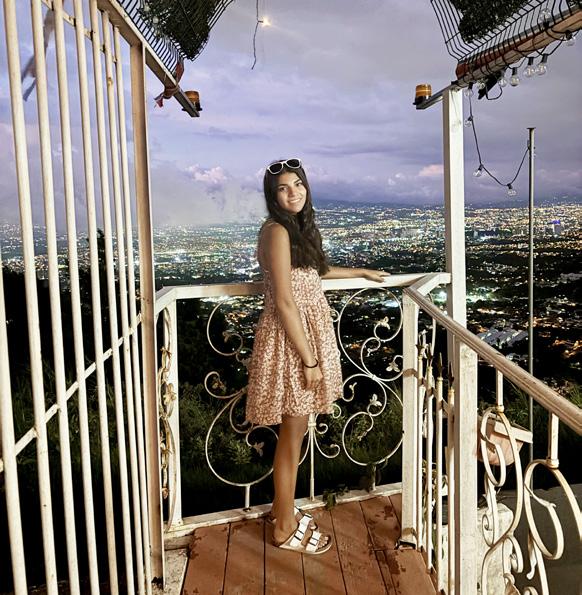
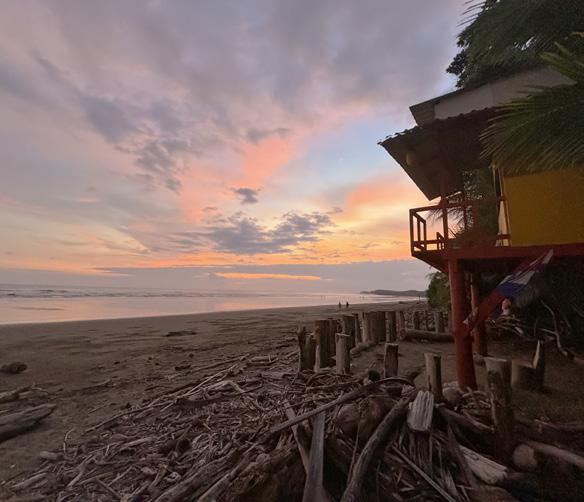
a part of their ancestry. On the last night, we gathered around the campfire, heard stories and participated in a jaguar dance.
From Terraba we transitioned to Uvita, which was surrounded by miles of beautiful ocean. Brant Stoltz ’26 said: “For me, my favorite part of the trip was visiting the beach. After working hard at the camp, the beach was such a nice reward and it felt even better knowing the work we had done.”
Here we enjoyed all Uvita had to offer, including its scenery and snorkeling tour. On boats, we traveled to Caño island and snorkeled through a studied preservation area. It was truly a great experience being able to observe nature and sea life from a firsthand perspective.
While swimming, my group saw a series of different fish, coral and sea turtles. This made me realize how much sea life is actually in the ocean. As our last days in Uvita came to an end, a small group got to walk one of Uvita’s national beaches during the sunset. On one side we were able to see the extensive ocean and on the other side was a surreal view of the mountains and rainforest.
As the trip came to an end, I was able to personally reflect on every part of my day-to-day experience. This trip taught me to appreciate my life at home so much more than I did before and made me more aware of different cultures and people. I reflected most on the word “sustainability” and what that meant to me.

Faculty member and trip co-chaperone Emily Dromgold ’17 said: “Before our trip, I had never contributed to building a garden from wildland to completion. Working together with everyone taught me not only how much we could do together, but also about the satisfaction of working with the land and appreciating the process of completing this kind of task from start to finish.
“Sustainability’s definition for me now carries the attributes of communal effort, more appreciation for nature and life around us, and a better understanding of happiness that can be derived from creating green spaces that feed and help our communities. I believe sustainable actions and supporting sustainable actions can not only help our planet, but also create happier and more connected communities.”
Overall, Costa Rica taught me how to be sustainable in my own household and respect the spaces around me more.



in a gold frame. Still, the one that called to me was this piece of mountains that seemed quite complicated with all its bits of newspaper and magazine cutouts, only for me to take a step back and piece together its true meaning. Another piece on difficulties during the pandemic faced by Asian immigrants taught me the value of perspectives.
Right from the time we boarded the British Airways flight, as someone who ranks airlines with a discerning eye, this one soared to the top. Each window seat boasted an elegant side compartment—perfect for stowing my rather bulky T. rex blanket, much to the amusement of fellow travelers at Heathrow as I deboarded.
My encounter with art began right from that moment on the flight. The excitement of the land of fish and chips keeping me awake, I stared into the soul of the night sky outside my window. The view can only be described as something you’d see if you were the infamous Captain Jack Sparrow, spending every moment of your time as an explorer of worlds. I looked out of the window, perched on the second deck of the flight, to see that we are flying among the stars through a clear sky.
Because the wing had two end plates, one on top and one on bottom, it felt like the plane glided through an ocean, reflecting the sky above and the moon rising at the horizon.
As soon as we set foot on England soil, we were welcomed by the very popular cloudy, grey sky that London is known for. I always thought that as an international student with 9½ hours difference between the two different sides of the world I’m from, you’d think that I would know
If there were ever a competition for the sheer number of pieces of art and the best chocolate-covered strawberries in a country, England would claim the crown with regal ease.
I thrive on being deliciously lost in the most delightfully literal sense. Museums, with their labyrinthine galleries, have always topped my list of places to lose myself. They are where you lose yourself as this one person you are well acquainted with and find your way back anew,
having stolen secrets from every display. So, you can understand my confidence in wandering with no sense of direction or depth whatsoever in all the museums, castles and cathedrals England had to offer.
England has been the only place I found myself running from exhibit to exhibit in the grand VA (Victoria and Albert Museum) just to investigate each detail, like Baker Street’s very own Sherlock, of all the breathtaking (quite literally) pieces. As a self-proclaimed practitioner myself, the museum was nothing short of a brain-picking session with the creators themselves.
One piece that particularly stuck with me was definitely a meter-long portrait of the royal hound
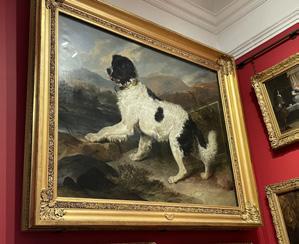
The streets, the architecture, the statues and the markets were where we spent all our possessions for an experience of a lifetime, tasting all that the light touched.”
that jet lag is a very real thing, not to mention it can get you like the devil at any given point of time and that you’d arm yourself with a bit of morning caffeine.
Still, I chose to tough it and fell asleep sitting in every last place I could find on that first day. And the weather definitely did not help keep my jet lag at bay (the price I paid for the gorgeous view on the flight—worth every cup of coffee I drank after).
The next day, England was happy. The sun was out and about and lit up the Kensington Palace. While the inside was nonetheless enlightened by chandeliers, that must have taken the entire royal court to put together. Grand paintings lined the walls and ceiling, and every inch of the architecture of the royal staircase to the court. In the paintings, each stroke had a meaning in all its intricateness. Who needs canvas when you have a palace? I could relate.
Now, I always prefer not to be restricted by the frame of a canvas when endless royal walls are at my disposal; only then can the artist truly communicate with the passersby. Once again, I lost myself in the palace, although it was quite a challenge with all the guards in every doorway telling me the directions.
But this time, on my way back, I was versed in the art of history and how each act that seems so far from our routine life affects us, and of course, a rich tapestry of stories and culture woven into every red, white and royal blue cushioned throne.
The more and more we strode along the London streets, the more colour we were exposed to. The streets, the architecture, the statues and the markets were where we spent all our possessions for an experience of a lifetime, tasting all that the light touched. The one that stands tall amongst the rest, quite literally, is the Monument

•
of the Great London Fire, a memorial of the fire that engulfed half of London.
I saw the monument as a thread of art that comminutes culture and lived experience of perseverance that followed the fiery display. I gained more insight into the 20/20 hindsight of history-shaping events through all the thought, time and effort that went into crafting such silent stories of stone and bronze, more than I could have gained if I had lived through those events.
Thames Cruise and the guide, with all the enthusiasm of a tax auditor, pointed out what he lovingly refers to as the “boring beige building on your right”—yes, the London National Theatre. I would have never believed something with a name as grey as the London sky, would house a play like the London Tide.
But, lo and behold. London may no longer have the original, the man, the myth, the legendary cobblestone streets everywhere we walked, but that play took us back exactly to those streets, to the times of old, to the times of beginning.
As I chased down those quintessentially English automobiles for a photo, I had my full circle moment. My first (trip application) essay frolicked around these metal art pieces as they do on the wrong side of the road and the Silverstone Circuit. Sprinting after fleeting art pieces, London wasn’t just a place to wander—it was a track meet, and my camera was always one step behind!
Continuing the moment full of circles, the vinyl spun tales as old as time in genres England is best known for: rock. I bagged my first British punk album there, creating a soundtrack that once again included the likes of the very band from my first essay.
Then, there was the ascent to the divine dome of St. Paul’s Cathedral. Each step was a mini-pilgrimage backward in time, spiraling toward the heavens and the celestial mysteries beyond in a mesh of art and precision geometry that could make an atheist believe.
The panoramic view from the top—a tapestry of the old and new London—served as a moment of epiphany as I connected the dots down in the gift shop. I realized I was Paddington as I held a stuffed bear keychain, traversing from Peru to the chilly British summer, minus the marmalade sandwiches plus a funky T. rex blanket.
Reflecting on the shivering cold of an English June, the playful shadows at the National Theatre and that serendipitous cruise along the Thames, I recognized each experience as a thread in the grand tapestry of life’s narrative. These were not merely tourist checkmarks but profound engagements with history, culture and self.
Now as I reminisce as I feast on another chocolate-covered strawberry, of the time I lost myself in the royal British street, England might have been the first place I ran in a museum, but it surely will not be the last.
“How much farther?” was the only thought on my mind as I started to climb what felt like the millionth step in our nine-mile hike through the foothills of the Annapurna mountain range. The combination of the pouring rain and the steep ascent had made for a tiring journey, which was confirmed by the grimaces on my classmates’ faces as we started climbing yet another set of stone stairs.
However, as we neared our final destination for the day—our teahouse in the small mountain village of Ghandruk, Nepal—the expressions of my classmates began to shift. I was wondering what warranted this change in attitude when I saw our trekking guide, Krishna, gesture to a spot farther up in the mountains.
Suddenly, I saw it: the snow-capped peak of Annapurna South.
My breath caught in my throat as I looked at the huge mountain that felt so close to me despite being miles away. It was surreal to see it in person after looking at so many photos online

in preparation for the trip. So, after letting out screams of awe and excitement, my roommate Sadie-Lou Krause ’26 and I rushed to capture pictures of it on our phones immediately.
As I looked closer, the surrounding snow caps of the Annapurnas and the holy mountain Machhapuchhre became visible, and I felt a burst of energy despite my tired legs.
As if the picturesque scenery couldn’t get any better, after we got settled in our rooms in the teahouse and walked out on the balcony, a double rainbow appeared over the mountains, making us forget about our physical fatigue and wet clothes.
Looking back on the WMA-led trip to Nepal in June, that moment when I saw the mountains made everything worth it: the long flight, navigating the chaotic streets of the capital city, Kathmandu, and the bumpy six-hour bus ride to Nayapul—a village outside of Pokhara—where we started our hike. When we discussed the trip in the airport going home, we all agreed that our three-day trek in the mountains was a special and unforgettable experience, undoubtedly the peak of our trip (no pun intended).
This was somewhat expected as Nepal is home to Mount Everest, the tallest mountain in the world, and is mostly known for its trekking opportunities. But, thanks to our wonderful tour guide B.K., who showed us several different areas of Nepal, I learned that the country has so much more to offer than just the mountains.
The vibrant and complex Nepalese culture was on display when we landed in Kathmandu. As we exited the airport, our senses were immediately assaulted with different colors, scents, noises and the dense crowds of people milling about.
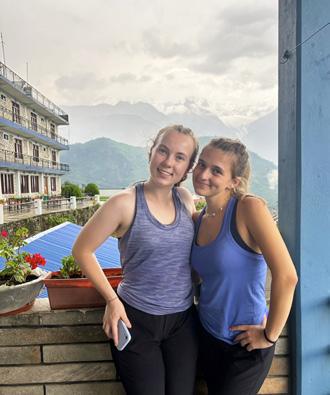

We then navigated the small streets and were transfixed by the myriad of colorful buildings and the countless mopeds weaving in and out of larger buses and occasionally cars. With no traffic lights or street signs, there were several moments during our bus ride to the hotel when I thought I might witness a crash, and as we walked on the busy streets I heard a scream from Narayan Kalia ’26, who had narrowly avoided a collision with a moped himself.
“I felt the mirrors on that guy!” he exclaimed.
We spent the next several days in the Patan area of Kathmandu, visiting Hindu temples and learning about the importance of religion in Nepal. It is a primarily Hindu country with a growing Buddhist population, evidenced by the prayer flags waving from virtually every building.
After learning about the role of Buddhist beliefs in the Nepalese way of life, I then understood why there was no road rage on the hectic roads!
Kathmandu prepared us for the rest of the trip, as we adjusted to the time difference, learned how to barter with shopkeepers for a lower price and slept off our jet lag. Highlights of our time there included visiting the Buddhist Monkey Temple and going to a Newari script writing workshop—the Newar being one of 125 ethnic groups in Nepal.
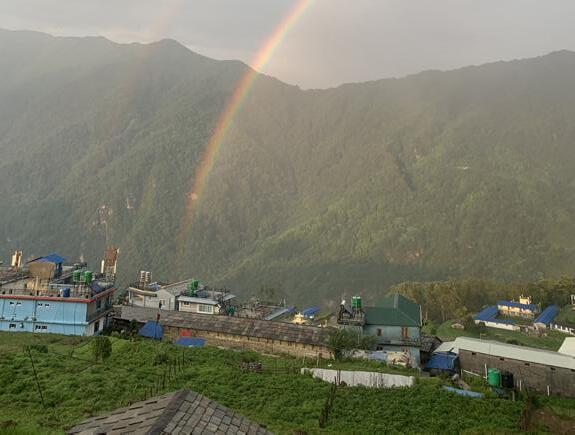
The next day, that bumpy six-hour bus ride took us to Pokhara, a smaller city northwest of Kathmandu. However to break up the travel time, we went on a white water rafting excursion and had lunch in a small village in the middle of the day.
After arriving in Pokhara—which has the most beautiful lake with a backdrop of scenic green mountains—and staying for one night, we started our three-day trek in the Annapurna foothills. In the mountains we stayed in several teahouses, which are small lodges along the trekking routes.
After our trek, we returned to Pokhara and explored sites in the city over the next few days. We took a boat ride on the idyllic Phewa lake, visited the World Peace Stupa, Gupteshwor Cave, Devi’s Falls and the International Mountaineering Museum.
My personal favorite part of our time in Pokhara was our momo cooking class. Momo’s are a typical Nepalese dish, similar to dumplings. Their origins can be traced back to Tibetan cuisine, and for our cooking class we traveled to the Tibetan refugee camp and were taught how to make authentic momos.
Another six-hour bus ride took us back to Kathmandu, thankfully more smoothly this time!
Our last few days in Nepal were spent in Panauti, a small town outside of Kathmandu, at
a homestay, which was another highlight of the trip for me. Our host family warmly welcomed us into their home and daily life. We ate typical Nepalese meals like Dal Bhat, dressed in traditional Saris, took a cycling tour through the town, and were taught different dances by local children (to whom we taught the “Ickey Shuffle” and “Whip and Nae Nae”). Although the language barrier proved to be slightly difficult at first, we eventually learned several words in Nepali and learned how to count to five.
Finally we returned to Kathmandu, where we finished out the trip by visiting Pashupatinath Temple and Boudhanath Stupa. We learned the sites were holy in Hinduism and Buddhism, respectively, and attracted large crowds of tourists and religious pilgrims.
In reflecting on the trip during the 14-hour flight home, I realized how special my time in Nepal was. It gave me a glimpse into a culture and society very different from my own, and I found it incredibly interesting to observe the role of spirituality in the daily lives of the Nepalese people. So much so, that my bedroom window is adorned with prayer flags I brought home with me! I will look back on this trip fondly and feel so thankful to have been able to have had such an amazing experience in a truly beautiful place.
Established in 2001, this fund provides travel grants to faculty members who have completed five years of classroom teaching at WMA. These grants recognize and reward our exceptional faculty for their devotion to the school and its students, and help them become more aware of the interdependent world in which we live and from which our students hail.
b y jamie gouin Faculty, Middle School Science
When given the Hubbard Faculty Travel Grant in October 2023, I could not think of a better country with all its natural wonders that fit the WMA Middle School science curriculum than Iceland. The endless waterfalls, volcanic activity, earthquakes, glaciers, and flora and fauna of the country have captivated my curiosity since childhood. To experience this firsthand and to bring it back to my classroom was the primary goal for this trip. In early June, my family and I took a red- eye flight to Reykjavik, Iceland, to embark on an eight-day journey around the island. We traveled by car following along Route 1 (Ring Road), stopping at six towns and visiting the natural history of the island. We were to reach our destination right in time to experience the midnight sun and to embrace the 24 hours of daylight. In addition, this 1,322-kilometer trip was a great chance for my wife and me to catch up with our two children, Grace-marie ’20 and Brady ’23, who were home from college.
Upon landing in Reykjavik, we had brunch at the Fridheimar self-sustained tomato farm and restaurant. Fridheimar’s greenhouse is heated by a local geothermal spring located on the property. There, the heated water is reused to water the thousands of heirloom tomato plants in the greenhouse. A koi pond fertilizes the plants. Each tomato plant is used for approximately 10 months and composted back into the soil. Bees are imported from the Netherlands to pollinate the greenhouse. While eating tomato soup and admiring the towering 25-foot-high tomato plants that surrounded my dining table, I could not help but wonder how Fridheimar’s farming techniques could be used back at WMA’s Darcy Memorial Greenhouse.
The first day of our trip was spent touring the “Golden Circle,” a tourist route in southern Iceland covering about 300 km, looping from Reykjavík into the southern uplands of Iceland. Several key stopping points included the Geysir Geothermal Field, Gullfoss waterfall and countless scenic views of the impressive landscape. The English word “geyser” originated from the Geysir Geothermal Field (hot spring), which erupts a plum of steam approximately every five minutes. Gullfoss provided us with an amazing
display of rainbows arching over the falls, which plunges 32 meters into the Hvítá River.
On the second day, we headed counterclockwise on Ring Road to the Snæfellsnes peninsula in the western part of Iceland to visit Kirkjufell, which is reputed to be the most photographed mountain in Iceland. It is easily recognizable to “Game of Thrones” fans as Arrowhead Mountain. The area gave us a gorgeous view of a nearby waterfall cutting through ancient volcanic fields. The highlight for me was trekking in Snæfellsjökull National Park, which holds endless ancient basalt lava fields, views of the 700,000-year-old stratovolcano and countless dormant craters that pockmark the national park.
The small town of Varmahlíð provided us with some of the most stunning panoramic views along Ring Road. Looking eastward from over the dashboard, we gradually were greeted by the unique snow-covered, flat-topped mountains of Vatnsskarð pass in Skagafjörður. We admired the cascading waterfalls that poured out of the mountain ranges on either side of us and the cute turf-roofed houses that dotted local farms. These mountains are called stapi, which were formed while laying underneath glaciers. The extreme weight of the ice flattened out the mountain range a few million years ago.
Our first glimpse of the Mid-Atlantic Ridge occurred halfway through our trip while driving
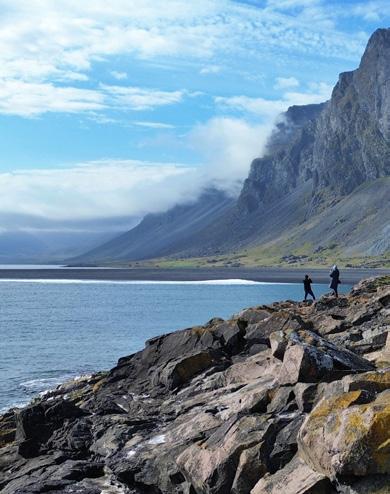
near Mývatn Lake. Mývatn is located near Goðafoss waterfall in the North Fjords. Goðafoss has a 12-meter drop and provides a picturesque view to visitors. The waterfall gets its name on the account that an early chieftain threw his pagan idols over the falls with his acceptance of christianity. The Mid-Atlantic Ridge runs diagonally north to south through Iceland. The ridge is actually a divergent boundary created by two separating tectonic plates, North America and Europe, forming Iceland 16 to 18 million years ago. I spend a good amount of time in the science classroom talking about this area and was excited to see it up close.
By the sixth day, we reached the Eastern Fjords and went horseback riding along a crystal blue river. The river meandered through a valley of green grasses and mosses, while a patchwork of purple flowers blanketed the bottom of the valley wedged in between a cascade of snow covered mountains. Our tour guide was a retired biology professor from a local university. He informed us that the purple flower is called lupine (Lupinus nootkatensis), an invasive plant to the island. It was brought from Alaska in an effort to combat soil erosion. Lupine is outcompeting native

mosses and forcing many of them to the brink of extinction.
Father’s Day was on the second to last day of the trip. To celebrate, we walked along Diamond Beach near Jökulsárlón glacier lagoon and marveled at the floating debris of ice that washed up on shore, giving the beach its name.
By the afternoon, we hiked the nearby Sólheimajökull Glacier with a certified guide and had the opportunity to fill up our water bottles with the glacial runoff for a refreshing drink. Sólheimajökull Glacier had a wealth of dramatic

ice formations including crevasses, rugged ridges and sinkholes. The day was completed with additional hikes of both the Fjaðrárgljúfur Gorge and Múlagljúfur Canyon, and walking beneath the towering basalt columns of the Black Sand Beach in the town of Vik.
Our journey came to an end in the town of Grindavík in the Reykjanes peninsula southwest of Reykjavik. Here we took one last hike to watch an active volcano that was headlining world news. Iceland truly lived up to its name as the land of fire and ice.
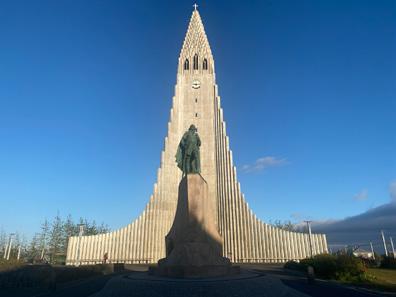
• An expanse of Blue Lupine (Lupinuspilosus L.).
• The statue of Leif Erikson in front of Hallgrimskirkja Church in Reykjavik.
Chair, History & Social Sciences

The
Kandel Family—
Director of Annual Giving
Annie Kandel and faculty member Dr. Anthony Kandel and children—had a wonderful trip to Greece, traveling in July thanks to the Academy’s generous Hubbard Faculty Travel Grant.
We hoped to combine a survey of classic Greek sites, thus indulging an appetite for history, with a deep dive into Greek natural beauty, culture and cuisine.
We enjoyed about eight days in Athens and Thessaloniki, where we saw great sights, toured marketplaces, met a plethora of wonderful Greek people and enjoyed some scootering along the shore.
Perhaps the highlight of the trip, however, was a week in Crete, the beautiful island off the coast of mainland Greece. Staying just 50 meters from the sea, we toured the coastline, visited multiple beautiful beaches, hiked some great trails, enjoyed the port city of Chania, and indulged in a tremendous amount of wonderful Greek food and drink. Ranging from the ubiquitous Greek salad (tomatoes, olives, cukes) to Spanakopita, Moussaka, Gyro or Souvlaki, every evening was a treat.
The Greeks are an incredibly hospitable people: At every restaurant, the “house” would treat us to a pre-dinner Ouzo (Greek liqueur) and a post-dinner dessert. Thanks to a lot of walking, we managed to avoid putting on too much weight—but it wasn’t easy!
Finally, Dr. K had a chance to revisit his past: “Forty years ago, I went to Crete and visited a

gorgeous remote beach called Elafonissi, which was literally empty,” he said. “After spending several days there without seeing any other people, I mentally christened it the world’s greatest beach.
“Now, unsurprisingly, it has been discovered, and while still beautiful, hundreds of people visit daily. Luckily, it is huge, and so if you are willing to walk down the beach for 15 minutes, you can be, as my daughter Abby noted, ‘back in 1984.’”
It was just five of us at the remote end of the beach, enjoying clear water, sunshine and a Greek picnic—of course.
It was a pleasure to share a place from my past with my family, and to see that the beauty of this spot was still so unspoiled. Overall— a great trip, and memories to cherish for a lifetime!
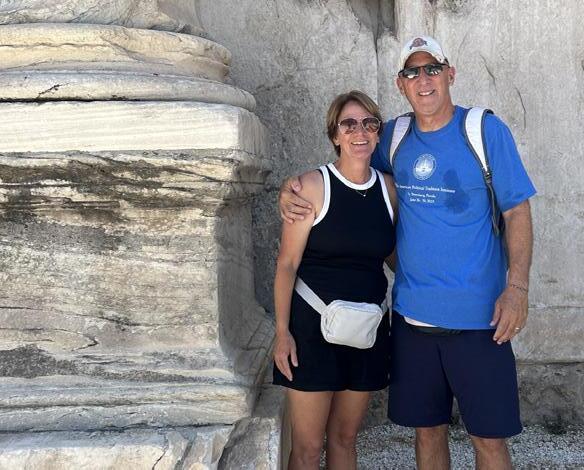
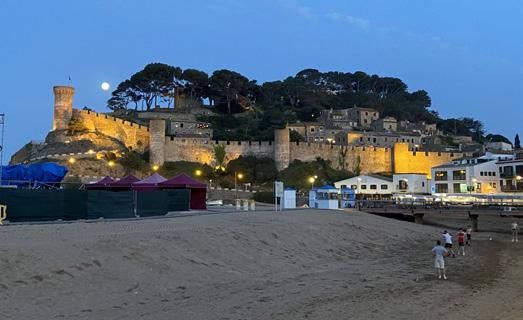
b y mar V ina lowry - broo
K Faculty, Fine & Performing Arts
The Hubbard Faculty Travel Grant gave me a wonderful opportunity this past summer. My daughter Kiki ’26 and I traveled to Spain, where we spent all of our time on the coast of the Mediterranean Sea.
I love traveling and getting to know new places, food and ways of life, and I wanted to share that with my daughter. We began our adventure in Barcelona, traveled to the Costa Brava, and then south of Barcelona on the coast, ending back in Barcelona.
Although we both speak French, we tried learning a bit of Spanish before we went, which was helpful but not totally necessary. The Spanish were very friendly and helped us whenever we needed it. Barcelona was beautiful and sunny. We were able to master the metro and bus systems by the end of our stay. It was very easy to get around. The food was remarkable and inexpensive. Both of us are intolerant to gluten and there were gluten-free restaurants and bakeries all over

Barcelona, so we had a fabulous time eating! Even more remarkable was the architecture of Antoni Gaudi, a visionary architect from the latter part of the 19th century. His style is referred to as Catalan Modernism, which is reminiscent of the more organic forms of nature rather than geometric man-made buildings. We couldn’t help but see Dr. Seuss’s illustrations of
buildings seem to evoke Gaudi’s style.
We visited the Parc Guell, which has several houses and other structures designed by Gaudi, La Sagrada de Familia (Gaudi’s cathedral) and the other houses he built in the center of Barcelona. There is an incredible richness to the architecture of Barcelona beyond Gaudi’s contributions. The Gothic Quarter (near the sea) was full of interesting, narrow streets and beautiful architecture, which one can envision walking down in another century. Since Barcelona abuts the Mediterranean, the beautiful, sandy beaches seem to blend right into the edge of the city.
The Picasso Museum was also nestled into the Gothic Quarter in a renovated Gothic palace. As an artist and art teacher, getting to see original works of art is always a treat but seeing it in this beautiful location seemed to make it even better. We also visited Parc de Montjuic, which houses the museum of the Catalan artist Joan Miro, where we saw many of his original paintings and sculptures.
Kiki and I also got to meet up with Lucia Segura Espinosa ’26, who attended WMA during the 2023–2024 school year as an international student from Barcelona. Unfortunately, none of us thought to commemorate the event with a photo!
We were introduced to many Catalan and Spanish foods during our dinner with Lucia and her mother, Susi Espinosa. We also had the opportunity to tour Señora Espinosa’s fashion design company and get some firsthand looks at a central producer of Spanish design.
The more magical parts of the trip were spent on and in the Mediterranean Sea. The rocky coasts, medieval castles, cliff walks and snorkeling were amazing experiences we won’t soon forget. The views, the food and the people will long remain in my thoughts, desires and plans for the future!

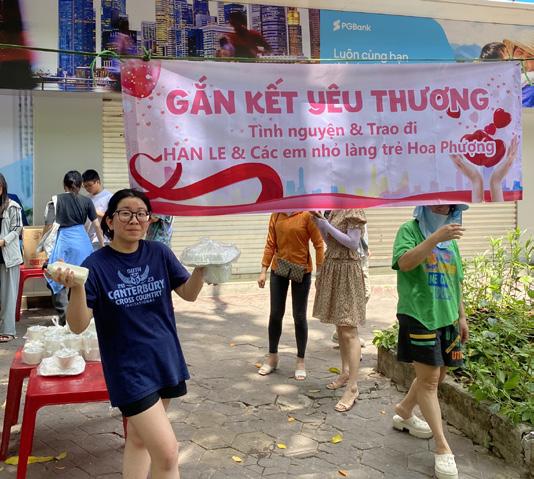
by ryan C ooley ’26
FFor Han Le ’25, volunteering and giving back to her community is truly a passion. She spent the summer before her senior year running two volunteer organizations—Think Right Do Right and Eyes of Hope—in her home country of Vietnam. She was inspired to create these service projects during her time on the Service Team at Wilbraham & Monson Academy.
According to Han, the Think Right Do Right project “calls for the help of students from every place in Vietnam to volunteer in (rural) mountainous regions. Each year, we go to different regions to do our service work. This year’s destination was Lang Son.”
After researching schools in the Lang Son region, Han and the Think Right Do Right team selected Don Riec Preschool as the focus of their work, as it is severely underfunded. The team noticed the lack of safe sanitation facilities, and with the hope of bringing a safe learning environment to the students there, Han and her team worked to “construct two toilets in the hope that it would provide the kids with better conditions at school.”
She and her team also helped teach English and soft skills, such as teamwork and communication, to more than 45 preschool-aged children.
“All of our efforts preparing for the lessons paid off, as the kids welcomed us with the musical performances that they had been practicing for weeks,” she said. “When I saw the smile on their faces, I was extremely happy—that’s a feeling I would never find again.”
When I saw the smile on their faces, I was extremely happy— that’s a feeling I would never find again.” han le ’25

Think Right Do Right also collected daily necessities from donors and distributed them in the city. Additionally, they planted trees to make the area more attractive to tourists, which would help to boost the local economy.
In addition to Think Right Do Right, Han also ran another volunteer organization, called Eyes of Hope.
According to Han: “Eyes of Hope focuses on helping people in my hometown—Haiphong City.” Through Eyes of Hope, Han and her team raised more than 12 million VND (about $500) through organizing craft workshops at a local cafe. They used this money to help more than 60 children at Hua Phuong Village, a home in Haiphong City for children with disabilities, as well as children who have been orphaned, abandoned or are homeless.
Through volunteering at Hua Phuong Village, Han “realized it’s a blessing to have been born healthy.” She “witnessed kids with physical disabilities struggling to survive every day of their life” and shared that “the visit taught me to appreciate everything I’m given in my life.”
Han said that seeing the hope in their eyes, despite the severe pain, was the reason she named the organization Eyes of Hope and that she hopes her team’s donations and service will have made a difference in the lives of the children living there.
Additionally, Eyes of Hope used the money that they raised to provide 250 meals to elderly people in need on the streets of Haiphong City. She shared “Although it’s just a meal, I hope it made their day, because seeing their smiles made mine.”
Through these experiences, Han shared that she “learned that community service is not individual work. I wouldn’t have been able to do anything if it hadn’t been for the support from my family, friends and my community.
“There were moments when I thought about giving up on this project, but my family and friends assured me of their support, no matter what. I’m sincerely grateful for the consistent support that I received over the past six months.”
Going forward, Han hopes that she can continue to make an impact on her communities. She feels that while providing 250 meals to those in need was a huge accomplishment, there are still
so many people living in poverty in her city that she would like to help.
Even so, she shared that she follows the Vietnamese saying Góp gió thành bão, which means “many a little makes a miracle.” Han said: “I’m looking to make a long-term impact I hope that my service work would not only better the community, but also inspire young people to work together to make a miracle in real life.”



WMA faculty members and staff have many more talents and interests than those shared inside the classroom or office space. Here is a sampling of what some enjoyed during the summer of 2024.

Emily Dromgold ’17 Faculty, English
Ms. Dromgold had her first poetry collection, “The Dog with the Flute in its Mouth,” published by Finishing Line Press.

Madame Dubois traveled to Iceland, Italy and France. Her highlights included watching a semifinal tennis match at the French Open, learning how to make pasta from scratch and attending a weeklong conference for language teachers.

Melissa Earls Dean of Academics/ Associate Head
Mrs. Earls and her family toured England to visit historical and literary sites they’ve been longing to see, such as Jane Austen’s home village of Chawton, the Churchill War Rooms and the Warner Bros. Harry Potter Studios.

Brian Easler Head of School
Mr. Easler made time to sharpen his surfing skills while on vacation in Hawaii.
Mr. Fischer and his family traveled throughout California, including Redwood National Park.

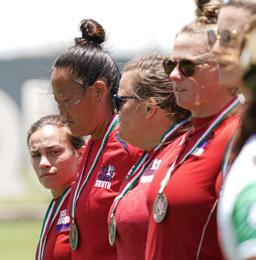
As a player (second from left), Ms. Fletcher helped Team USA South win the Rugby Americas North Women’s XVs Tournament in Mexico.
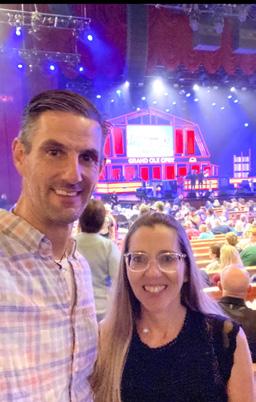
Mr. Gouin and his wife, Christine, visited the Grand Ole Opry in Nashville, Tennessee.

Mr. Kindblom worked from June to August as a land steward for the Woodie Wheaton Land, which protects, preserves and conserves the land and water of the Chiputneticook Lakes Region of Eastern Maine and Western New Brunswick.


Mr. Lombard hiked Mount Katahdin in Maine with family and friends in June.
Mrs. Robinson spent a lot of time at lacrosse fields in the spring, with her boys (Jack ’19— St. Anselm; Luke ’23—University of Massachusetts) playing collegiately. Jack’s team reached the Division II Final Four.

Clark Seibold Faculty, Music
Mr. Seibold’s band, King Saison, performed in Chicken, Alaska, at the Chicken Stock Music Festival.
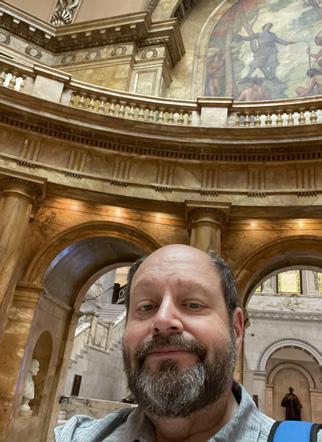
Dr. John Strauss Chair, Science
Dr. Strauss attended the Massachusetts Energy Conference for Educators, a three-day event in Hyannis sponsored by The National Energy Education Development Project.
Drew Shea ’08 Faculty, World Languages/ Dean of Residential Life
After nine years, Mr. Shea stepped down as Director of Beech Tree Day Camp. No one performs “Song of the Day” quite like Mr. Shea.
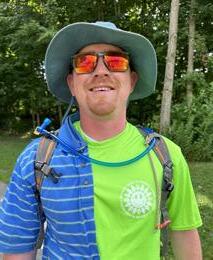
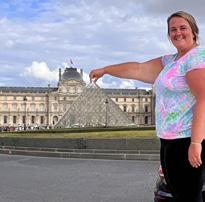
Rita Sullivan Faculty, English
After visiting Portugal and London, Ms. Sullivan toured France with a youth exchange program, where she visited Paris and Normandy, and celebrated Bastille Day on July 14.

Jeff Vartabedian Faculty, Health
Danielle Vartabedian Coach, Cross Country/ Track & Field
The couple celebrated their 25th wedding anniversary.

David Weeks Supervisor, Athletic Equipment & Facilities
Mr. Weeks went skydiving on Cape Cod and can’t wait to do it again.
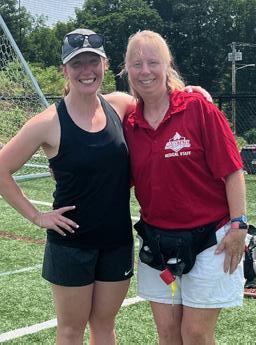
Erika Whipple Head Athletic Trainer
Ms. Whipple, right, with Sydney Liptak ’16, volunteered as a trainer at the Bay State Games for the 29th year.
Goal: “Be a part of Wilbraham’s continued progress toward excellence”

What do you like to do when you are not working?
Active outdoors person (hiking, sailing, paddling, mountain biking)
Involvement outside of work
Coaching youth sports—soccer, football, softball
If you could visit one city in the world, where would you go?
Casablanca Morocco
What’s the most interesting thing about you most people don’t know?
Passionate about coffee
What extracurricular activities did you do in school?
Wrestling in high school and college
Why are you interested in joining the Board of Trustees?
To maintain and extend the legacy of my father, Jim LaCrosse ’50W
As a Board of Trustee member, what is your goal?
Be a part of Wilbraham’s continued progress toward excellence
Accomplishments during adulthood
I am extremely proud of the work that I have done as a school counselor in addition to being the parent of two children who are both involved in education.
current hometown Hanover, NH family
Son of James ’50W and Patricia LaCrosse
Two children: Carter and Thea place of employment
Recently retired after 26 years as a school counselor
colle G e education and de G ree S
B.A., Wesleyan University
M.Ed., Plymouth State College
hi G h S c hool
North Central High School, Indianapolis, IN
alumni in aT hle T i C s
It was quite a summer for many alumni in the athletics world, but it was one to remember for three in particular. Maodo Lo ’12, Wenyen Gabriel ’16 and Kyle Filipowski ’22 each reached high-level milestones in the game of basketball. Lo and Gabriel had great success competing for their native countries at the Summer Olympics in Paris, while Filipowski was a high NBA Draft pick of the Utah Jazz.
Maodo was a key cog as an experienced guard for the German Men’s Basketball National Team at the 2024 Olympic Games in Paris. Maodo played in three games as Deutschland reached the semifinals, where it lost to Serbia in the bronze medal game.
Maodo, who was born in Berlin, Germany, played in the Olympics for his home country for the second time. He averaged 14 points for Germany at the 2020 games in Tokyo. The point guard also helped Germany win the 2023 FIBA Basketball World Cup.
The 2016 Columbia University graduate plays professionally for Olimpia Milano, the top league in Italy.
• Maodo Lo ’12 during Olympic action for Germany.

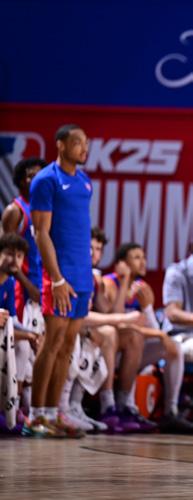
Wenyen competed for South Sudan Men’s National Team at the 2024 Olympic Games.
Wenyen, who plays multiple positions at 6-feet-9, averaged six points and nine rebounds in three Olympic games. He grabbed 10 rebounds in 27 minutes in a loss to eventual gold medalist USA.
South Sudan qualified for its first Olympics by finishing as the top African country at the 2023 FIBA Basketball World Cup.
After playing 150 games for seven teams in the NBA, Wenyen signed a contract in July to play for the Maccabi Tel Aviv of the Israeli Basketball Premiere League.
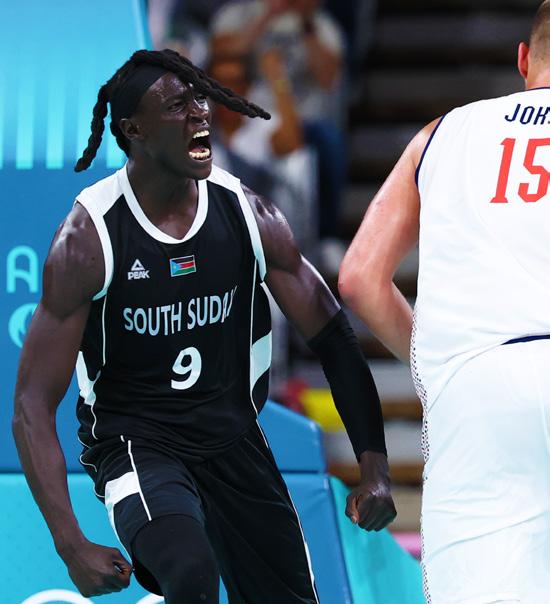
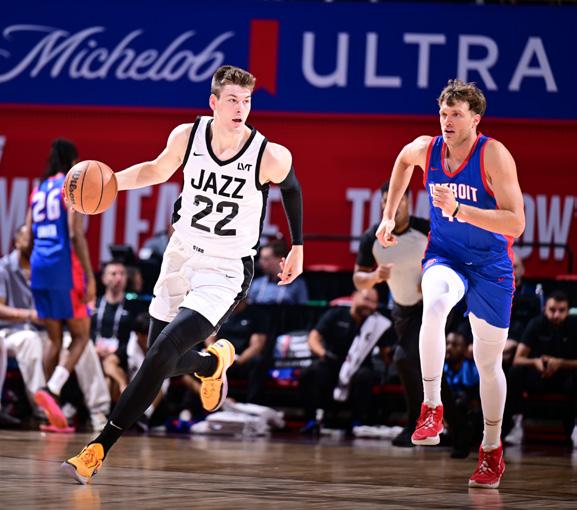
Kyle was taken with the 32nd pick in the NBA Draft by the Utah Jazz. The early second-round pick played for two seasons at Duke University.
The 7-footer was a unanimous Second Team All-American selection as well as All-Atlantic Coast Conference First Team following his sophomore year.
Kyle also led Team USA to the gold medal at the FIBA 3×3 Men’s U18 Championships in Hungary in 2021.
Kyle played three seasons at WMA, helping the Titans to the 2020 New England AA Conference championship. The Gatorade Basketball Player of the Year for Massachusetts in 2021 led WMA to top-10 national rankings during his senior year.
• Kyle Filipowski ’22 competes for the Utah Jazz during NBA Summer League play.

wilbraham & monson a C ademy
ALUMNI
Mr. Jeffrey G. Belden ’89
Mr. David A. Harvey ’75
Mr. Joseph M. Manuli ’87
monson a C ademy
ALUMNI
Mr. Robert E. Abrahms ’48
Dr. Stephen J. Alphas ’47
Mr. Raymond E. Barton ’48
Mr. Dominic Bellunduno ’48
Mr. John A. Brockway ’61
Mr. Wayne E. Clark ’48
Mr. Philip R. Dunn ’48
Dr. Paul D. Duval, DDS ’48
Mr. Stephen J. Fierberg ’53
Mr. David L. Gallaway ’47
Mr. H. David Garrity ’54
Mr. Jerome J. Golen ’48
Mr. Henry J. Hart Jr. ’48
Mr. John Holochuck ’48
Mr. W. Frank Hutton ’47
Mr. Robert M. Laviolette ’54
Mr. Frederick J. Lyman ’53
Mr. John M. Lynch ’48
Mr. James A. Mazza Jr. ’59
Mr. Louis E. Pelissier ’48
Mr. Victor E. Quillard ’48
Mr. Irwin J. Rosenthal ’48
Mr. Edwin C. Satter III ’55
Mr. Herbert Z. Sokol ’48
Mr. William G. Sullivan ’47
Dr. Robert E. Tosoni ’58
wilbraham a C ademy
ALUMNI
Mr. Nicholas E. Andreson ’47
Mr. Lee A. Anspacher ’60
Mr. Dale H. Atkins ’61
Dr. Robert J. Brandt, MD ’50
Mr. Gerald M. Davis ’55
Mr. Andre N. Duval ’47
Mr. Charles M. Furcolo ’58
Mr. Henry E. Gaviglio ’47
Mr. Philip H. Grandchamp ’56
Mr. Nicholas L. Holt ’52
Mr. Kenneth S. Hyde ’39
Dr. Robert L. Kalett ’54
Mr. Robert H. Kingsbury ’60
Mr. Richard H. Kruger ’71
Mr. Bert W. Lark ’48
Mr. David A. Levine ’66
Mr. William C. Manger ’62
Mr. Thomas H. McCallum Jr. ’56
Major Clark B. McCurdy ’54
Mr. Aram Miller ’55
Mr. Joel G. Niper ’52
Mr. William F. Nixon ’49
Mr. Arthur S. Robbins ’50
Mr. Paul M. Sheptow ’62
Mr. E. Sabin Spencer ’47
wma C ommuni T y
ALUMNI PARENT
Ms. Sharon L. Bliss
Mr. John J. Collins Sr.
Mr. John A. TenBrook
FORMER FACULTY
Mr. D. Peter Goodridge
FORMER STAFF
Mr. William Sullivan
I came to WMA with li le p ience int est in the ts. Fr the pleth a of eative t classes that WMA off s, my l e f painting was b n. Painting went an assignment to an activity I l e and do tside of sch l. I nev w ld've disc ed my l e f t with t the amazing c rses the sch l off s.
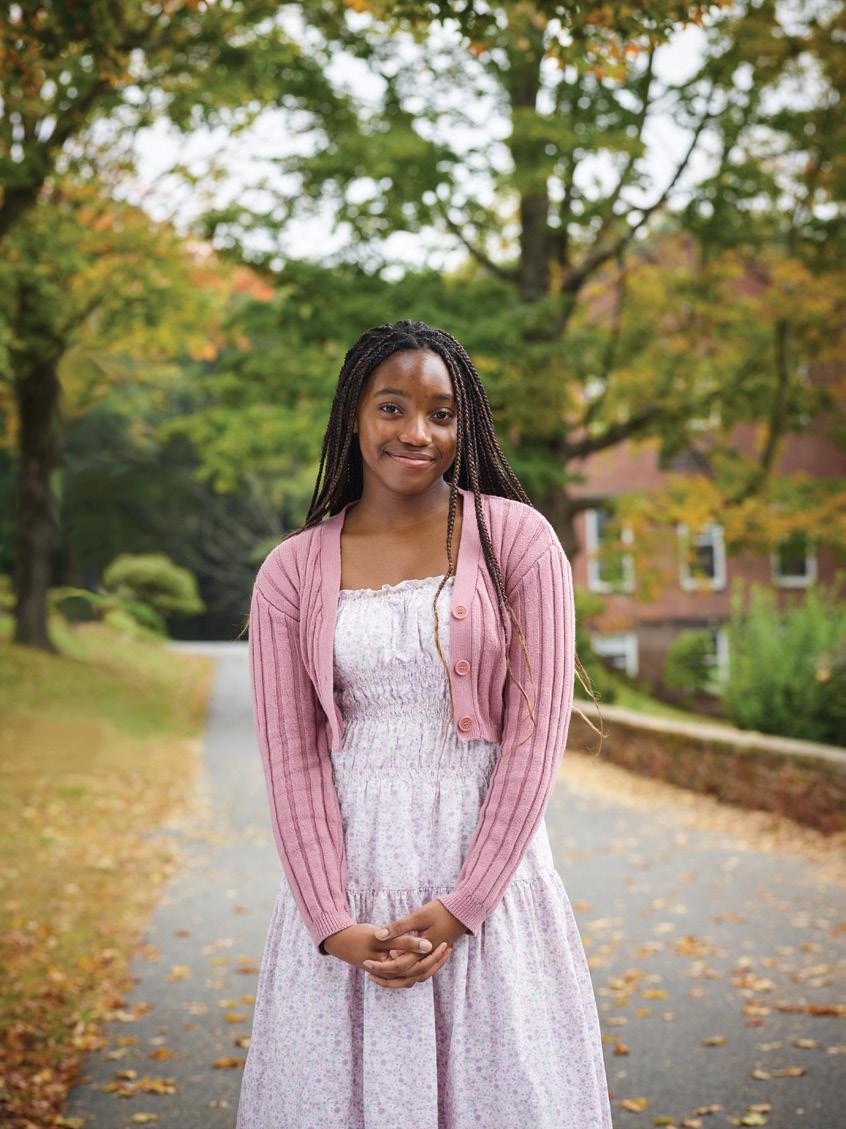

Philip C. Lawton writes: “Looking forward to getting my book published this summer—‘Legends of Cross Country.’ It details my experience and involvement with high school cross country running here in Southern Nevada, especially from 1997—when I founded the Southern Nevada Cross County Legends Hall of Fame—to the present. It also features articles I wrote as a “stringer” for the Las Vegas Review Journal and for internet sources from 2001 to 2023. At 88 years young, I’m just happy to still be on this side of the grass and
with most of my faculties. I enjoy following sports, including the latest from Wilbraham & Monson and UMass Amherst.” Editor’s note: Phil’s book has been published and he sent us a wonderful signed copy for our Alumni library.
1 Richard Carreno has written his seventh book, “The Inventive Life of George H. McFadden” (Camino Books), and it was scheduled to be published in September.

2 Andrew S. Moore writes: “I am sorry to inform my classmates that my wife, Susannah, passed away from complications of amyloidosis. Beyond that, I am living in New Hampton, New Hampshire, and have visited our two boys, our daughter-in-law and our granddaughters in Rincon, Puerto Rico, several times last winter. I have shipped a car down so that I can get around easily, and I’ve had the opportunity to play golf on numerous occasions. I also have the opportunity to get out and play pickleball on occasion down there.”
Richard G. Clifton is still living in Maine. The oldest of his six grandchildren is 18. He has visited the Academy a dozen times and shared: “It’s faring much better now. Great to see.”
1978
Mont E. Stong is retiring after 40 years of audiology! Mont is looking forward to the next phase of his life.
Matt won the prestigious Massachusetts Amateur Championship at his home course Framingham (Massachusetts) Country Club. He reached the final in 2023, and he’ll defend his title next year at GreatHorse in nearby Hampden, where he still holds membership.
Matt’s state amateur win also qualified him for his second U.S. Amateur, which was played in August at Hazeltine National Golf Club in Chaska, Minnesota. The USGA championship appearance was his sixth, topped by an appearance at the 2019 U.S. Open at Pebble Beach.
At WMA, his many accolades included winning the New England Prep School individual championship.
“WMA was instrumental in teaching me how to balance the components of life that define
who I am,” Matt said. “Balancing my personal life, professional life and my passion of golf at times is very important; and the mentorship I received at the Academy allows me to balance all three components. I still use the same balanced mindset that was distilled in me at the Academy—there are so many amazing people the Academy surrounds their students with, you are able learn from extremely mature individuals at a young age.”
He followed that with a standout career at Boston College and had been a professional tour player for 2½ years before regaining his amateur playing status.
Off the course, he lives in Boston and works as a client relationship manager at Winged Keel Group, an independent life insurance brokerage firm. Matt got engaged to Molly Menoni in early July.



Brent G. Todd writes: “I’ve been a City Councilor in Concord, New Hampshire, for 10 years, in the section of the city known as Penacook. In that time, we’ve been able to work on creating the park you read about (the first new park in Concord since 1988), bring a supermarket and other amenities to Penacook, build affordable housing options, secure a new location for the Penacook Branch Library and create about $25 million in infrastructure investments in Penacook. I’ve very
much enjoyed serving the public as a councilor. There is a small stipend associated with it, but it is otherwise a volunteer position. Certainly, my education at WMA has been a major factor in preparing me for this work, and I’ve been glad to support it over the years. My mother owns Haas Electric Inc., and we performed work for the school during the Greenhalgh (Gymnasium) building restoration some years ago, and donated electrical supplies and staging for graduation ceremonies in years past.”
3 Seiko Tanaka is an artist. One of her latest paintings, titled “God of the Chance,” was selected for the 2024 80th GENTEN Art Exhibition at The National Art Center in the Roppongi section of Tokyo, Japan.
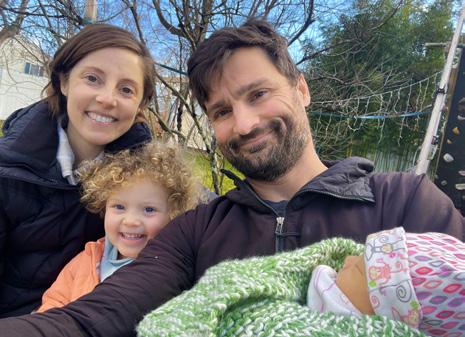
5


Sydney, left, with WMA Athletic Trainer Erika Whipple, served as co-head coach of the West field hockey team at the 2024 Summer Bay State Games in Fitchburg, Massachusetts. Sydney’s team reached the bronze medal game, losing to Coastal. Sydney serves as the head field hockey coach at Southwick-Tolland Regional High School in Massachusetts.
4 Kyle McKay and his wife, Natalie Coca-Ducach, welcomed their second daughter, named Dalski, on March 16, 2024.
5 Matt Trusz and his wife, Taylor, have just welcomed their first daughter, Margot, into the world. Everyone is happy and healthy.
6 Eugene Miculet got married! Eugene married Catalina Acosta on Feb. 9, 2024, in Cartagena, Colombia. Eugene and Catalina reside in New York.


7 Emily A. Vincunas and her husband, Rory McGonigle, welcomed their first daughter, Maisy Grace, in September 2023. They live in Bozeman, Montana. Emily and Rory continue to grow their hiking brand Hiker Hunger Outfitters, which sells trekking poles and supports mental health non-profits like Hike the Good Hike.
8 Suzanne Trusz now goes by Suzanne DiMaio following her marriage on May 20, 2024, to Nick DiMaio.
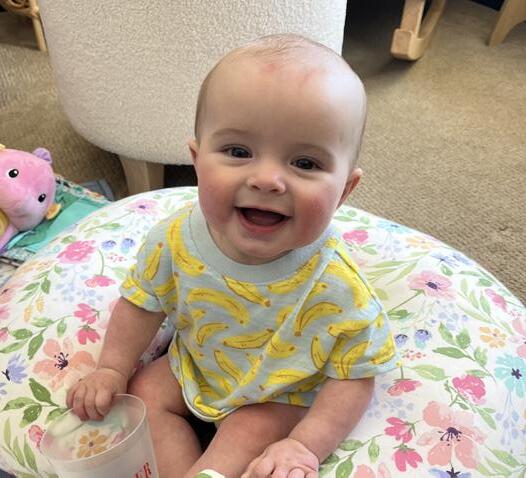


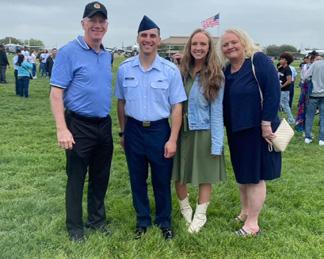
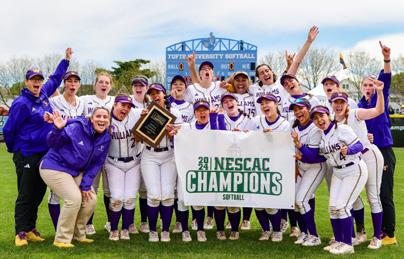
In her first season as assistant softball coach, Emma helped Williams College to a great season. As the No. 3 seed, the Ephs won the NESCAC title by beating Hamilton College, Bowdoin College and Trinity College, qualifying the team for the NCAA Division III Regional. Williams defeated No. 16 Rensselaer Polytechnic Institute, Framingham State University and No. 20 Husson University to earn a spot in a Super Regional, where the Ephs lost to host East Texas Baptist University.
Emma starred at Manhattan College, where she graduated magna cum laude with a bachelor’s degree in Exercise Science and a minor in religious studies in 2021. She later received her master’s degree in exercise science with a concentration in mental performance from Ithaca College in 2023.
9 Matthew Gaw and his wife, Jillian Godbout, welcomed a baby boy into their lives on March 12, 2024. His name is Shane.
10 Caitlin Mitchell writes: “Since January 2023, I have been working for the U.S. Department of Defense as a civilian attorney. I represent soldiers who are being medically discharged from the U.S. Army to help ensure that they receive the best benefits available from the Army and VA. I was recently recognized with the top prize for civilian attorneys who work in the Army—the Civilian Service Achievement Medal. The award states, among other things, that it was presented by Brigadier General George Smawley for “providing outstanding legal support to over 215 Soldiers undergoing the Disability Evaluation System” in 2023. At the same time, I was also recognized with the 2024 “ICE” Awards, which are awarded to three of about 120 attorneys (civilian or military) who also represent soldiers who are being medically discharged.” The ICE (Interactive Customer Evaluation) Award recognizes the top three attorneys who receive the most, voluntary and positive feedback from their clients.
Erica (DiMaria) Pollard got married in 2018. She shares, “We live in Longmeadow with our two kids, (ages) 4 and 7.” Erica now works as a dental hygienist in East Longmeadow and Northampton.
Jared Osumah is now a scout for the New York Giants and was recently seen in an episode of Hard Knocks on HBO.
11 Alex Caldwell joined the U.S. Air Force in September 2023. He completed basic training in March and graduated from Security Forces training in June. He is looking forward to serving his country and seeing where the Air Force takes him.
Kya Monette writes: “I graduated from St. Lawrence University on May 19, and then I will live and work at Cape Cod over the summer. After the summer, at the end of August, I will move to Greenwich, Connecticut, and work as an associate teacher at Brunswick School for two years. I will also get my master’s at Manhattanville College! I am so super excited!”
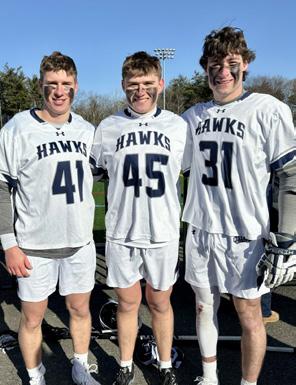
Jack capped a memorable five-year career for the St. Anselm College men’s lacrosse team. The former Division II Preseason All-American and All-Northeast 10 selection helped the Hawks top Pace University before edging Adelphi 10–9 in the Northeast-10 Championship. In the NCAA Division II tournament, St. Anselm beat Bentley University and Mercy before losing to Adelphi in a Final Four matchup. The Hawks finished the final national poll ranked sixth.
Jack works at Brannigan & Associates, a team practice under Ameriprise Financial in Post Office Park in Wilbraham. He is obtaining his licenses to become an Associate Financial Advisor at the practice and has his Series 7.


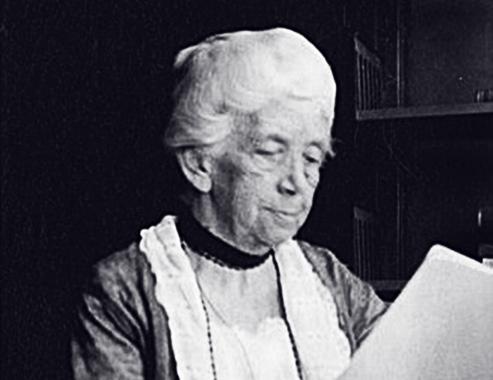
from
The Academy has had its share of alumni who have enjoyed successful careers in science fields. In our Science issue, we highlight one of them — Christine Ladd-Franklin, Wesleyan Academy Class of 1865.
in the intellectual equality of women.
b y jane T moran Director of Archives
CChristine Ladd-Franklin, valedictorian of the Wesleyan Academy Class of 1865, is probably best known as a passionate advocate for women’s rights, particularly in the realm of academia and science. Her views were shaped by her own experiences of gender discrimination and her belief
Key aspects of her views and advocacy that defined her life:
Advocacy for Women in Academia
Ms. Ladd-Franklin (1847 –1930) faced significant barriers in her educational and professional pursuits due to her gender. Despite completing all requirements for a Ph.D. at Johns Hopkins University in 1882, she was denied the degree. This personal experience fueled her commitment to advocating for women’s access to higher education and professional opportunities.
Equality in Education
She strongly believed that women deserved the same educational opportunities as men.
Ms. Ladd-Franklin campaigned for the admission of women to universities and fought against policies that excluded women from advanced studies and degrees. She actively worked to dismantle the barriers that prevented women from fully participating in academic life.
Membership in Professional Societies
Ms. Ladd-Franklin was also vocal
about the inclusion of women in scientific societies. She challenged the policies of organizations that excluded women from membership and participation. For instance, she fought for women’s membership in the American Psychological Association and other scientific bodies, arguing that women had made significant contributions to science and deserved recognition and inclusion.
Through her writings and public speeches, Ms. Ladd-Franklin articulated her views on gender equality. She often addressed the systemic biases and social norms that limited women’s roles in science and academia. Her publications and advocacy efforts aimed to highlight the capabilities of women and the importance of their contributions to intellectual and scientific advancements. A personal example, Ms. Ladd-Franklin’s own career served as a testament to her beliefs. Despite the numerous obstacles she faced, she persisted in her scholarly work and achieved significant breakthroughs in logic and psychology. Her success and determination provided a powerful example to other women in science and academia.
Collaboration and support networks
Ms. Ladd-Franklin believed in the importance of women supporting each other and forming networks to advance their collective cause. She often collaborated with other women scientists and educators, advocating for mutual support and the sharing of resources and opportunities.
Began as a student on our campus
Ms. Ladd-Franklin was an American psychologist, logician and mathematician, renowned for her
pioneering work in the field of color vision and her contributions to symbolic logic. Her career spanned various disciplines, and she played a significant role in the early development of psychology as a science.
Ms. Ladd-Franklin was born on December 1, 1847, in Windsor, Connecticut, and was raised in an intellectually stimulating environment. Her father was a merchant and her mother was well-educated, instilling in Ms. Ladd-Franklin a love for learning. After her mother’s death, she moved to Portsmouth, New Hampshire, to live with her grandmother, who further encouraged her educational pursuits. Ms. Ladd-Franklin attended Wesleyan Academy (today’s Wilbraham & Monson Academy) and Vassar College, where she studied under the influential astronomer Maria Mitchell. Despite societal constraints on women’s education, she excelled academically and graduated in 1869.
Ms. Ladd-Franklin pursued advanced studies at Johns Hopkins University, and in 1882 became the first woman to complete the requirements for a Ph.D. in mathematics and logic. Her dissertation on “The Algebra of Logic” significantly influenced the field, though she did not receive her degree until 1926 due to institutional gender biases. Her early work focused on symbolic logic, contributing to the development of what would later become known as Boolean algebra. She published several papers in this field, including her influential “On the Algebra of Logic” (1883).
In the mid-1880s, Ms. Ladd-Franklin shifted her focus to psychology, particularly the study of color
vision. She developed a theory of color vision that challenged the prevailing views of the time, which were primarily based on the YoungHelmholtz and Hering theories. Her theory proposed that color vision evolved in stages and that the perception of colors was linked to both evolutionary and physiological factors. Ms. Ladd-Franklin’s theory was innovative for its integration of evolutionary principles, suggesting that achromatic vision (black and white) evolved first, followed by the development of blue-yellow vision and finally red-green vision. This theory provided a framework for understanding color blindness and other anomalies in color perception. Ladd-Franklin’s contributions were recognized late in her life when she finally received her Ph.D. from Johns Hopkins University in 1926, 44 years after completing her dissertation. Despite the delays and obstacles, her work left a lasting impact on both psychology and logic.
Ms. Ladd-Franklin married Fabian Franklin, a mathematician, in 1882, and they had two children. The couple often collaborated intellectually, and Ms. Ladd-Franklin continued her academic pursuits while managing family responsibilities.
Ms. Ladd-Franklin died on March 5, 1930, in New York City. Her legacy as a pioneering woman in science endures, marked by her contributions to psychology, logic and her persistent advocacy for women’s rights in academia.
Ms. Ladd-Franklin was a trailblazer whose interdisciplinary work bridged the gaps between mathematics, logic and psychology. Her contributions to the theory of color vision and her advancements in symbolic logic remain influential,
and her perseverance in the face of gender-based discrimination continues to inspire future generations of women in science.
Ms. Ladd-Franklin’s advocacy for women’s rights in education and science had a lasting impact. Her efforts contributed to the gradual opening of academic and professional institutions to women, paving the way for future generations. Her legacy is reflected in the increased presence and recognition of women in fields that were once predominantly male.
In summary, Ms. Ladd-Franklin was a determined advocate for women’s rights, particularly in education and science. She fought against institutional discrimination, promoted equal opportunities, and used her own achievements to inspire and support other women in their academic and professional pursuits.
Ms. Ladd-Franklin’s publications spanned multiple disciplines including logic, mathematics, and psychology.
Here is a list of some of her significant publications in chronological order:
1. “The Algebra of Logic” (1883) This foundational work in symbolic logic was published in Studies in Logic by members of Johns Hopkins University.
2. “On the Algebra of Logic” (1883)
Published in The American Journal of Mathematics, this paper further develops her work in symbolic logic.
3. “On Some Characteristics of Symbolic Logic” (1884)
Published in The American Journal of Mathematics, this article continued her exploration of symbolic logic.
5. “The Psychological and Physiological Theory of Color Vision” (1893) — Published in The American Journal of Science, this paper presented her evolutionary theory of color vision.
6. “The Evolution of Color Vision” (1895) — In this paper published in Science, Ms. Ladd-Franklin elaborated on her theory of the evolutionary development of color vision.
7. “The Theory of Vision” (1907) A significant work discussed her theory of color vision, published in Science.
8. “Color and Color Theories” (1929) This book compiled her extensive research and theories on color vision, providing a comprehensive overview of her work in this area. Ms. LaddFranklin’s contributions were diverse and influential, with her work in logic laying foundational stones for future developments in the field, while her research on color vision offered new insights and challenged existing theories. Her publications reflect her interdisciplinary approach and her persistence in advancing scientific understanding despite the gender biases of her time.
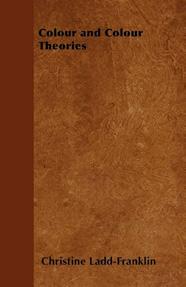
4. “The Nature of Color Sensation” (1892) — An early work on color vision published in The Popular Science Monthly. • Book cover, 1929
Wilbraham & Monson Academy
423 Main Street
Wilbraham, MA 01095-1715
www.wma.us
T el: 413.596.6811 address serV iC e requesT ed
